Self-published books showcased in Booklaunch

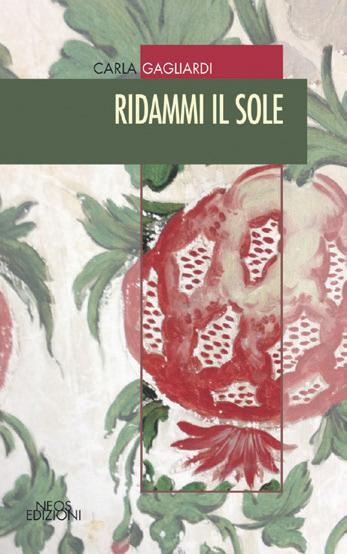
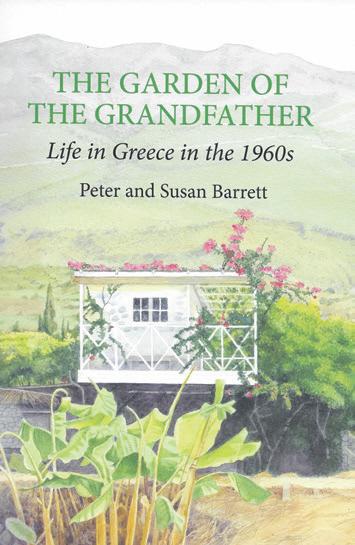
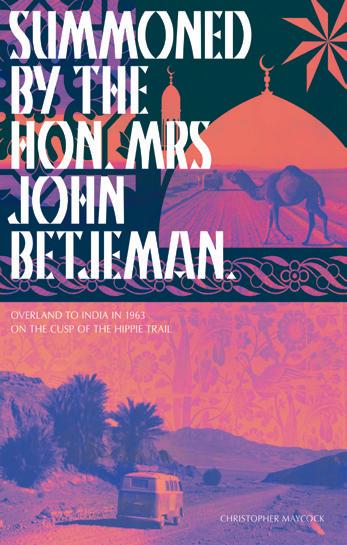
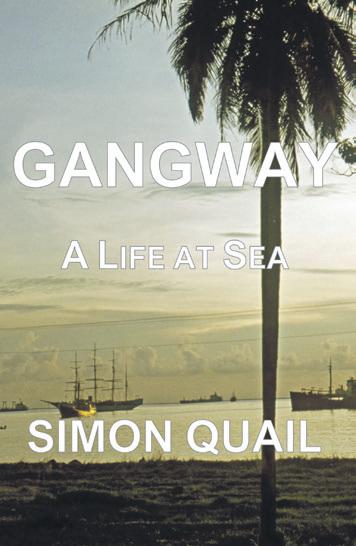
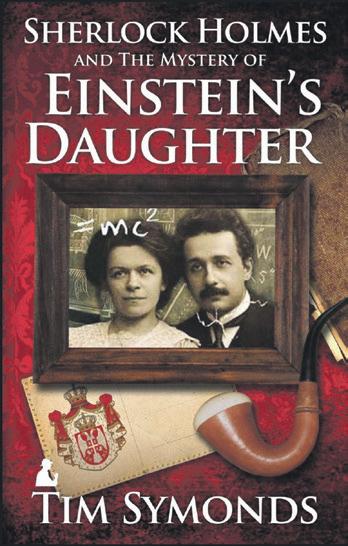







Other than giving us a chance to stay home and read— and I had just been re-reading Camus’s La Peste when news of covid-19 first broke: there’s irony for you— doesn’t there have to be a silver lining to this nightmare? I don’t mean that in the way some Downing Street adviser might: that the pandemic will cull the elderly and save the Treasury billions. I mean: surely everything now has to change.
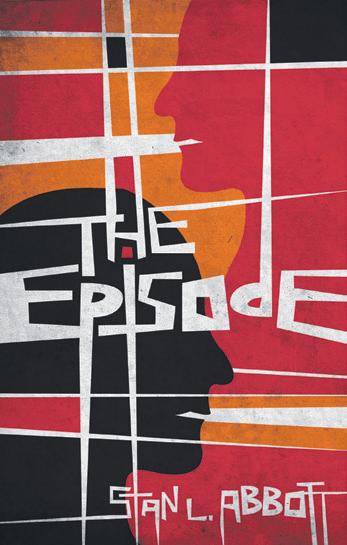

Anyone contemplating plague has to be forgiven for getting a bit existential. Get this wrong and we could go extinct (a worry Jonathan Lawley addresses in a different context on page 14). We find ourselves asking: what does the coronavirus mean and what does it want from us? Are we its prey—or might it have an interest in our survival? (How else could it breed without us? There’s a consoling thought.) Or is it too stupid not to wipe us out?
Those of a religious bent—and that includes environmentalists—might see it as, if not divine punishment for humanity’s evils, then at least an instrument for frightening us and purging us of our worst excesses (though I did see a Facebook post about a rabbi who said it was sent to punish those who thought that things were sent to punish us. Ho ho.) More precisely, it might be seen as a scourging that forces us to confront our most damaging behaviours.

Thus, if you believe in the Gaia theory—and I don’t— you might say that covid-19 was our planet’s rebalancing mechanism. We couldn’t do it; nature had to do it for us. A more acusatory interpretation is that this is payback time for our arrogant abuse of a world we should have cared more for nature’s refusal to put up with us any longer.
Since Booklaunch began 18 months ago, we have showcased 15 self-published books along with over 200 more by established publishers. We like to give independent authors a share of the limelight they cannot get in other publications. If you have self-published and want to showcase your book, email Maggie Bawden at book@booklaunch.london


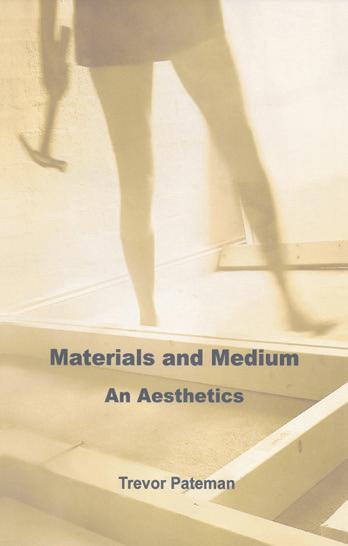



From that point of view, for all the horrors that will befall us, we can expect to see an upside. Here’s one: the shutdown in air travel and driving has brought about the first fall in air pollution since the 2008-09 financial crisis—something that seemed unachievable as recently as the Cop-25 climate conference in Spain in November. Global supply chains are on hold. Petrol is a redundant asset. We’re eating local produce. We’re making do.
Faced with the first real shock to have hit our unwary world since 1939, it feels as if we’ve come together in a way unimaginable during the fight for Brexit and prior. Faute de mieux, we are engaging with each other online (would that we all had shares in Zoom) as our children discover virtual classrooms and we join community groups or share online drinks as the sun sets over the yardarm. That’s good, however inconvenient. Those who once drove home from the pub no longer threaten our safety. Road accidents are a thing of the past; so are the chaos and emissions of twice-daily school runs.
Such changes must become permanent. Already, unbelievably, in exchange for lost freedoms, union bosses and hardline right-wingers have congratulated a “moderate” Conservative chancellor on his 80% bail-out for workers, raising the tantalising prospect, when this is all over, of a basic wage, a crucial element in any progress towards a just society. (The authors of Entrusted talked about this in our last issue.)
But is there really a new unity? I don’t think so. I think there’s a new schism, and one of biblical proportions; for while some of us are mortified by the existential question of how to afflict our souls so humanity survives, we’re bothered that others simply feel cheated out of partying that they’re not agonising except about how to bulk-buy toilet paper. And then there are criminals, petty and organised. And Russia, always up for mischief. And you thought Brexit was divisive …
Me, I’m a mortifier. (OK, and a finger-pointer.) I think we need violent shocks every so often to make us take stock of ourselves, and if we’ve gone wrong it’s because there haven’t been any recently. Call me Jeremiah but the worst news would be if we gained nothing from this purge, if our narcissistic self-indulgences once again became everyday life.
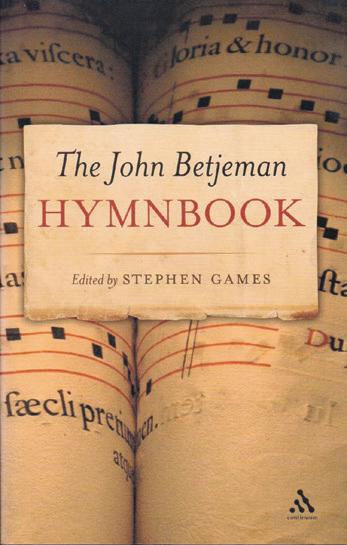
What, then, would be a good outcome? The death of capitalism? The end of stock-market profiteering? The banning of caramel frappuccino with extra cream? What do you think? Send me your thoughts.
Stephen Games Publisher and editorOver the last two hundred years, several clichés about Kant’s ‘philosophy of peace’ have developed. The first has to do with the historical assessment of this philosophy. Typical statements claim that ‘Kant was ahead of his time’ or simply ‘a child of his age’. Arms merchants talk of the ‘boomerang effect’ if a country sells high-powered military hardware that is later used against it. Intellectual and cultural historians face a similar problem; they may argue that an author is a child of their age only to find, decades later, the same argument turned against them.
German interpreters of the late-19th- and early20th-century are a case in point. They usually criticized Kant’s cosmopolitan, pacifist and republican thinking and offered two explanations: either that Kant was determined by Enlightenment prejudices and could not liberate himself from them (even if he had wanted to), or that he was simply too old and senile.
Things have by now changed. Kant’s early interpreters are seen as narrow-minded nationalists and monarchists, who endorsed German or Prussian militarism and reproduced the prejudices of their time. Kant, on the other hand, has turned into the far-sighted, independent-minded progressive thinker who anticipated a new cosmopolitan right.
These shifts indicate that we should be very careful with our own judgements about the historical place of Kant’s theory of international right and its philosophical merits. Kant was definitely embedded in and influenced by the Enlightenment and its debates but was not necessarily a child of his own age. What I find surprising is that it took us almost 200 years to work out that Kant offers a philosophical international relations theory of considerable importance.
Debunking the author of Perpetual Peace as a senile and naïve proponent of an outdated Age of Enlightenment is no longer tenable.
According to another cliché, Kant was ‘in favour of human rights, democracy, and world peace’. This is not downright wrong, but it has to be qualified. Kant had serious reservations about direct democracy (which he considered despotic), and he was partly influenced by the republican tradition (via Rousseau). Finally, Kant was a peace advocate or representative of legal pacifism, not a pacifist. He endorsed the rights of states to defend themselves, and to unite and fight against an ‘unjust enemy’.
According to another common perception, Kant was an early liberal. This is true, but again the statement has to be qualified. Kant was an early liberal, but also listened to his conservative critics. He believed that it is the duty of any philosopher to find out where one’s opponent is right and not where s/he is wrong. Thus, Kant was apparently led to believe that there was some truth in his opponents’ criticism.
Kant’s position is apologist and utopian at the same time. To put it more precisely, Kant argues on a level beyond and prior to the apologist–utopian dichotomy. He could be interpreted as being apologist; he could also be accused of being utopian. The truth is that Kant’s evolutionary theory mediates between both extremes. It is idealist but not necessarily utopian. It is embedded but not necessarily apologist.
The conflict between Kant and his conservative critics was part of the politicization of German philosophy in the 1790s and the crisis of the Enlightenment, which was challenged by romanticism and conservatism. The crisis of the Enlightenment was in turn a crisis of the authority of reason. For instance, many authors believed that French radicals such as Robespierre and Saint-Just embodied the rationalism of the Enlightenment. For them, pure reason had led to the terror and the guillotine. Many German radicals and conservatives thought that Kant’s philosophy provided the foundations of radical Jacobin theory.
The debate between Kant, Rehberg and Gentz in the pages of the Berlinische Monatsschrift revolved around four controversial issues. The first was the old dispute between rationalism and empiricism in ethics. In fact, Rehberg did not simply side with empiricism; he argued in favour of a compromise, supporting reason and historical traditions, custom and convention at the same time. Along with Kant, Rehberg believed that in real life we have to resort to standards of utility to determine our specific duties and to mediate between theory and practice.
My own approach to Kant entails the following features. First, I do believe that a historical approach is indispensable. Yet a historical approach should not be confused with a historicist approach, which assumes that there are no universal cognitive or moral standards. We should be careful with our own judgements. Texts are
usually complex and intricate combinations of ‘old’ and ‘new’, of the historically contingent and the universal.
Second, Kant is not the philosopher who has his head in the clouds but the philosopher trying to bridge the gulf between the ideal and the real. In this respect, he is often a victim of clichés and prejudices. Political scientist Friedrich Kratochwil, for example, claims that ahistorical, abstract Kantian moralism is dangerous, especially in international relations. Kant rejects universal principles, the categorical imperative and idealist ethics in favour of Humean moral sentiments.
I feel that Kratochwil’s interpretation reproduces standard clichés about Kant’s philosophy. Most arguments are directed against authors who (seem to) rely on Kant, whereas Kant himself is almost completely left out. Only one passage explicitly refers to a problem of international relations. Kratochwil quotes US Supreme Court judge Oliver Wendell Holmes, who has argued that the categorical imperative has to be rejected because it requires that soldiers be seen as ends in themselves, not as means, and that sending them into battle would violate this principle. Holmes judged it morally acceptable (‘I felt no pangs of remorse’) to send soldiers into battle and possible death, choosing to abandon the theory (Kantian moral philosophy) in favour of practice. This is not only interesting reasoning; it also fits perfectly into my overall theme of mediating between theory and practice.
If my argument is correct, then Holmes’s (and Kratochwil’s) syllogism is faulty. Kant would have argued that we must distinguish between right and ethics. He assigns the question of whether the government has a right to send its subjects into war to legal philosophy. One may argue that a state is entitled to defend itself and apply ‘all necessary means’, including the use of force, to do so. Kant is happy with the provision that the citizens give their ‘free consent’ to military action. Thus Kant does not seem to believe that soldiers are always and inevitably used by their governments as mere means if they go to war. Yet somehow, many of us expect Kant to think this way.
At this point, some tend to argue that Kant should have written along these lines, that the ‘true’ Kantian outcome has to be like that; or they arrive with Kratochwil at the conclusion that Kant’s theory is ‘overly moralistic’.
I have serious doubts about both conclusions. This book attempts to demonstrate that Kant is less ahistorical, abstract, moralistic, idealist or ‘liberal’ in the contemporary sense than usually assumed (which does not turn him into a communitarian, a classical republican or a conservative like Gentz or Rehberg).
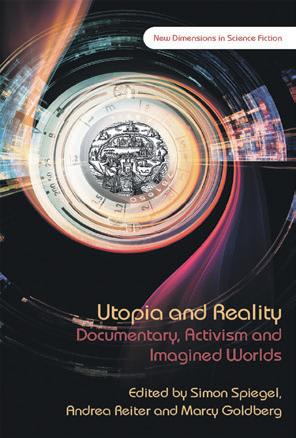
Third, I assume that this book paints an unconventional picture of Kant’s philosophy of international right. He is not only the philosopher of grandiose, sweeping statements about justice and peace. We do find these statements in his writings but the picture I present in this book is different: it is the ‘pedantic’ Kant of numerous definitions, qualifications and caveats. This might be disappointing for some readers. Yet I think that this is one reason why Kant’s theory is indispensable for our times. It combines two elements: the idealistic and normative, focusing on principles and the goal; as well as reflections on how to attain this goal and put these principles into practice.
In the 1790s, the fate of the Enlightenment (Aufklärung) was at stake, and the end of the century saw its demise. Yet the 20th century has seen the rebirth of some Enlightenment ideas. Jürgen Habermas and John Rawls, two prominent authors of political philosophy in the second half of the century, both stand for a critical reassessment of Enlightenment ideas and both draw on Kant in particular. In his course of lectures on international relations at the London School of Economics, Martin Wight claimed ‘that there is very little, if anything, new in political theory [and] that the great moral debates of the past are … our debates’.
Kant is a case in point. His moral, political and international theory is food for our thought. He offers basic principles, and we cannot do without them. We also cannot avoid going beyond him because many of our contemporary problems are not covered by Kant. We do not find anything about private international law, economic integration, or the impact of the internet on the freedom of speech in his writings. Yet the general moral and legal principles of Kant’s philosophy give us a firm starting point in evaluating these issues. Last but not least Kant helps us to avoid mistakes. He offers a reliable framework, although we must fill it. The idea of justice lies at the heart of the Pax Kantiana; we still have to spell it out.
POLITICAL PHILOSOPHY NOW
KANT AND THE THEORY AND PRACTICE OF INTERNATIONAL RIGHT

Georg Cavallar
University of Wales (Cardiff), Softback, 9781786835529, 288 pages, 138 mm x 216 mm, 1 April 2020
Publisher’s price £39.99
Save £2.23
Booklaunch price £37.76 inc. free UK delivery
To buy this book, visit www.booklaunch.london/sales
FROM
WRITING WALES IN ENGLISH
AND FLIGHT ESSAYS ON RON BERRY

George Burdett, Sarah Morse (eds) RRP £24.99 Save £0.45 Our price £24.54

£0.45
Our price £24.54 Find
Simon Spiegel, Andrea Reiter, Marcy Goldberg (eds) RRP £75.33
SPIES, SPIN AND THE FOURTH ESTATE BRITISH INTELLIGENCE AND THE MEDIA
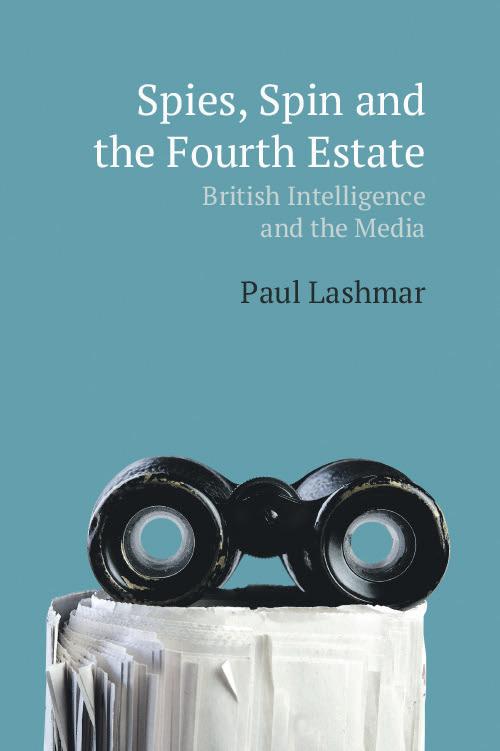 Paul Lashmar
Paul Lashmar
Edinburgh University Press (Edinburgh), Softback, 9781474443081, 256 pages, 138 mm x 216 mm, 30 April 2020
A powerful motivation for writing this book was my anger and despair that the UK’s official oversight and accountability system had failed to be inquisitive, robust and critical. I could only identify a handful of occasions in a quarter of a century when oversight bodies or officials had been in any way critical of the intelligence agencies, and then only when the case was irrefutable.
However, my critique was partially confounded when, in little over a week in June 2018, a series of reports by oversight bodies appeared that were notable for their unprecedented criticism, including two reports released by the parliamentary oversight body, the Intelligence and Security Committee (ISC), whose past record had been supine.
These new reports contained disturbing details about Secret Intelligence Service (SIS) involvement in the CIA’s rendition and torture policy after 9/11. This involvement had been deliberately concealed for over a decade. In December 2005 the then Labour Foreign Secretary Jack Straw, the minister responsible for the SIS and GCHQ, issued a categorical denial of SIS involvement in rendition and torture when he told the Commons Foreign Affairs Committee:
Unless we all start to believe in conspiracy theories and that the officials are lying, that I am lying, that behind this there is some kind of secret state, which is in league with some dark forces in the United States … there simply is no truth in the claims that the United Kingdom has been involved in rendition.
pendent court set up by the government to investigate unlawful intrusion by public bodies, concluded that the Foreign Office has, on several occasions, given GCHQ carte blanche to extract data from telecoms and internet companies. The judgment noted: ‘In cases in which … the foreign secretary made a general direction which applied to all communications through the networks operated by the [communications service provider], there had been an unlawful delegation of the power.’ To my pleasant surprise two oversight mechanisms were seen to act as guardians rather than ostriches.
Jack Straw has never explained his 2005 denial that British intelligence was involved in rendition and torture. Perhaps he did not know, but in that case he has a responsibility to say so in public. In response to the 2013 publication of the Snowden documents, prime minster David Cameron said that GCHQ operated within the law and was ‘properly governed intelligence’. It is now clear that that was false and that GCHQ was often operating outside the law or, at its most benign, covering its legal exposure with a threadbare patchwork of antiquated laws never drafted for the modern age.
‘It was all a bloody lie’
Publisher’s price £14.99 Save £1.80
Booklaunch price £13.19 inc. free UK delivery
To buy this book, visit www.booklaunch.london/sales
Straw was setting out the line for government and the intelligence agencies to parrot for a decade. Significantly, some 13 years later, the ‘cheerleaders’ at the ISC had evolved into ‘guardians’ and it seemed that Jack Straw had misled the media and public. The ISC’s full oversight of MI6’s involvement in rendition and torture was constrained because it lacked the key powers to investigate further. It noted that the then Prime Minister Theresa May had intervened to exempt SIS officers from public accountability and the rule of law. The ISC was unable to require the senior SIS officers who had overseen cooperation with the US rendition programme and the junior SIS officers who took part in these events to give evidence.
The ISC’s four-year inquiry found that the UK had planned, agreed or financed some 31 rendition operations. Moreover, there were 15 occasions when British intelligence officers consented to or witnessed torture, and 232 occasions on which the intelligence agencies supplied questions put during interrogation to detainees who they knew or suspected were being mistreated.
MI5 had helped to finance a rendition operation in June 2003. In October 2004, the then foreign secretary, Jack Straw, authorised the payment of a large share of the cost of rendering two people from one country to another. The underlying proposition was that national security trumped the rule of law.
INTELLIGENCE, SURVEILLANCE
SECRET
THE ARAB WORLD AND WESTERN INTELLIGENCE ANALYSING THE MIDDLE EAST, 1956-1981
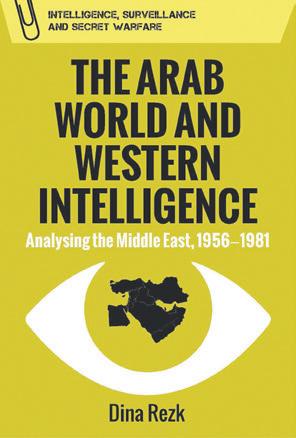
Dina Rezk
RRP £24.99
Save £4.57 Our price £20.42
That the ISC had found some guts, if not teeth, may be down to Dominic Grieve, the maverick Conservative politician and a very different ISC chair from his predecessor, Sir Malcolm Rifkind. That accountability appears so dependent on the character of the chair is a concern. The 2018 reports reflected a robust and critical tone but were still constrained by the committee’s inability to subpoena officials. The Committee forcefully made the point that it needed greater powers to undertake its work effectively.
The ISC reports were timely and came just a month after the then prime minister Theresa May issued a public apology to Abdel Hakim Belhaj, who was kidnapped in 2004 with the assistance of the SIS. He was rendered to one of Muammar Gaddafi’s prisons, along with his pregnant wife Fatima Boudchar, and tortured. These reports are important landmarks for accountability, but a year later one of the first actions of Boris Johnson on taking office as prime minister, was to block the next stage of the inquiry, a decision The Guardian (2019) labelled ‘immoral’.
INTELLIGENCE, SURVEILLANCE AND SECRET WARFARE THE TWILIGHT OF THE BRITISH EMPIRE BRITISH INTELLIGENCE AND COUNTERSUBVERSION IN THE MIDDLE EAST, 1948-63

Chikara Hashimoto
RRP £24.99
Save £5.59 Our price £19.40
SPYING ON THE WORLD THE DECLASSIFIED DOCUMENTS OF THE JOINT INTELLIGENCE COMMITTEE, 1936-2013 Richard J Aldrich, Rory Cormac, Michael S Goodman (eds)

RRP £29.99
Save £6.00
Our price £23.99
Two days before the ISC reported, an important independent tribunal judgment was delivered, officially confirming that the British government broke the law by allowing spy agencies to amass data on UK citizens without proper oversight from the Foreign Office. GCHQ had been given greatly increased powers to obtain and analyse citizens’ data after the 9/11 terrorist attacks in 2001 on the condition that it agreed to strict oversight from the foreign secretary.
The Investigatory Powers Tribunal (ITP), an inde-
The release of the scathing ISC reports in 2018 sparked one of the most powerful condemnations of the deceitful nature of the British intelligence community I have seen in recent years. It came from the Observer’s Peter Beaumont, who had been dealing with official intelligence contacts over many years. He noted that the denials are what readers get to see—the carefully formulated statements written in government press offices, often after a period of to-and-fro with the journalist.
What readers don’t get to see is another kind of to-andfro: the direct appeal to editors and reporters, the insistence that our secret services ‘don’t do this kind of thing’, are bound by rules, by UK, EU and international law, are ‘Crown Servants’, and in any case are bound by a sense of decency.
Except, as it is now quite clear, it was all a bloody lie. The answers given to journalists at the Observer over the years, as well as colleagues at the Guardian and at other news organisations, as they investigated these allegations, were rotten with untruth and evasion.
More likely, the exasperated Beaumont fumed, it was worse than that: it was nothing short of a long-running cover-up that persisted for a decade and a half, to sustain the impression that torture is something that only happens in other countries.
In recent years, the agencies have given assurances that they are concerned with human rights. However, we have no way to check. We have little idea whether MI5 or (in a different mode) the SIS continue to take advantage of innocent participants, as the Special Demonstration Squad did, and we cannot know until the archives become available.
One evolving and major concern about the intelligence world post-9/11 is the outsourcing of intelligence operations. The direction of travel by the Five Eyes network (Australia, Canada, New Zealand, the United Kingdom and the United States) means surveillance capability is subject to gradual integration with the private sector, which is at least partly motivated by profit. The power of algorithm-based technology and artificial intelligence, where public and private sectors become indistinguishable, has the potential for mass behavioural modification. This presents a terrifying prospect.
The closed nature of the intelligence services makes it difficult for the media to exercise a coherent critique. We do not know what the value systems are of those who populate the intelligence services or how their value systems guide them. The UK intelligence community has successfully resisted any kind of external ethnographic study, as far as I am aware. I only know of two such studies and both were in the United States. In the unlikely event that psychometric tests of recruits were ever published, they might help us understand what intelligence staff think their job is and who they think they protect.
Intelligence historian Christopher Andrew points out that the ‘under-theorisation’ of intelligence studies is not simply a problem for academic research:
It also degrades much public discussion of the role of intelligence. Since September 11, 2001, the media
Find out more about this book on our website
‘Unless I am lying, the UK is not involved in rendition.’ Really, Mr Straw?
Shortly after the Brexit referendum result was declared early on Friday 24 June 2016, David Cameron emerged from the front door of 10 Downing Street to make two important announcements.
The first was that he would be resigning as prime minister. The other was that the government would not immediately be notifying the European Council, under article 50 of the Treaty on European Union, of its intention to withdraw from the EU.
Article 50 of the Treaty on European Union says that a member state can withdraw from the EU ‘in accordance with its own constitutional requirements’. But what were they? The UK’s constitution is ‘uncodified’ – largely unwritten – and there was nothing in the referendum legislation to say what should happen next.
In a newspaper article published a few hours after the result was declared, I suggested that giving effect to Brexit would require parliamentary approval. … That proved to be correct – although I did not go so far as to say that it would be unlawful for the government to trigger article 50 without first obtaining an Act of parliament. The credit for that argument must go to three constitutional lawyers: Nick Barber, Tom Hickman and Jeff King. In a blog published the following Monday, they argued that ministers could not use their prerogative powers to overturn a statute. … ‘Before an article 50 declaration can be issued,’ they wrote, ‘parliament must enact a statute empowering … the prime minister to issue notice under article 50 of the Treaty of Lisbon.’
That was an important proposition that needed to be tested in the courts. Mishcon de Reya was one of several law firms that took up the challenge. Its lawyers signed up a public-spirited investment manager named Gina Miller and argued on her behalf that triggering Brexit would require primary legislation. On 3 November 2016 the High Court agreed.
Judgment in the Miller case was delivered by Lord Thomas of Cwmgiedd, Sir Terence Etherton and Lord Justice Sales. ‘The sole question in this case,’ said the three senior judges, ‘is whether, as a matter of the constitutional law of the United Kingdom, the Crown – acting through the executive government of the day – is entitled to use its prerogative powers to give notice under article 50 for the United Kingdom to cease to be a member of the European Union.’
The judges’ answer was unflinching. Without specific authority from parliament, they ruled, ‘the Crown cannot through the exercise of its prerogative powers alter the domestic law of the United Kingdom and modify rights acquired in domestic law under the European Communities Act 1972 … We hold that the Secretary of State does not have power under the Crown’s prerogative to give notice … for the United Kingdom to withdraw from the European Union.’ …
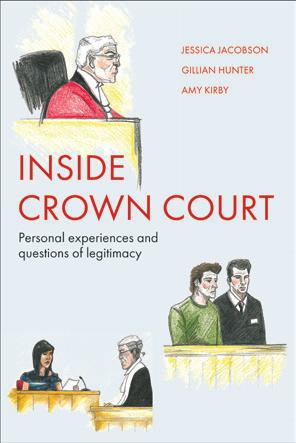
If ministers could not use their inherent powers to trigger Brexit, ministers would have to ask parliament to pass legislation. But some of those who had voted to leave the EU … didn’t want MPs to have anything to do with the article 50 notification. If parliament had to give its approval, Brexit might never be triggered. On this argument, the judges could be seen as trying to obstruct the referendum result.
What
Viewed from a constitutional perspective, the High Court judgment was entirely supportive of democracy. In what amounted to a choice between government and parliament, the lord chief justice, the master of the rolls and a lord justice of appeal had come down on the side of the legislature.
Unfortunately, the High Court missed a trick by making no effort to ‘sell’ its judgment to the people. It would only have needed another sentence – perhaps in a press summary – explaining that a simple Act of parliament would permit the government to do as it wished.
Spelling this out would have helped to shape broadcast news coverage on the day of the ruling. But it might not have had much effect on the Brexit-supporting newspapers. Coverage the following day played to readers’ prejudices.
The Sun carried a picture of Gina Miller under the headline ‘Who do EU think you are?’ The Daily Express, in a front-page comment headlined ‘We must get out of the EU’, said that Britain was now facing ‘a crisis as grave as anything since the dark days when Churchill vowed we would fight them on the beaches’. It asserted, without a hint of irony or self-doubt, that 3 November 2016 ‘was the day democracy died’.
The Daily Telegraph, which used to be regarded as
a serious newspaper, printed official photographs of the three judges in monochrome – with a blue tint to make them look more sinister. Its headline read: ‘The judges versus the people’.
But the Daily Mail could be relied on to top that. Its front-page story carried the by-line of James Slack, who later joined Downing Street as Theresa May’s spokesman. But it was written by Paul Dacre, the then editor. This is how it began:
MPs last night tore into an unelected panel of ‘out of touch’ judges for ruling that embittered Remain supporters in parliament should be allowed to frustrate the verdict of the British public. …
Above the story were slightly out-of-date photographs of the three judges, two of them in the full-bottomed wigs that are worn only on ceremonial occasions. The sub-heading was ‘Fury over “out of touch” judges who defied 17.4m Brexit voters and could trigger constitutional crisis’. And the headline, dominating the page, was ‘ENEMIES OF THE PEOPLE’.
As Thomas’s successor noted nearly two years later, that was ‘a phrase used by tyrants throughout history to justify the persecution and death of those who do not toe the line’. Looking back, a former foreign editor of The Times said it was ‘one of the most chilling headlines ever to appear in a British newspaper’. But it was only a headline.
My first reaction was to dismiss the Mail’s headline as something that would soon be forgotten: ‘today’s news –tomorrow’s fish-and-chip paper’, as we used to say. The lord chief justice and his two colleagues were far less relaxed and looked to the government for support.
In decades gone by, the lord chancellor would have spoken on their behalf. But that great office of state was then occupied by Liz Truss MP, who was something of a political lightweight. Nothing was heard from her for a couple of days, presumably because she was waiting for instructions from Downing Street and nobody in the prime minister’s office grasped the dangers of delay. Eventually, Truss expressed the view that judicial independence was ‘the foundation on which our rule of law is built’. When pressed, she said it was not for her to condemn the newspapers.
A little too late
Indeed, it was not. But what Truss was being asked to do was to defend the independence of the judiciary, in line with the oath she had taken on her appointment. As the judges saw it, that meant explaining that they had been traduced in the media. Truss’s response was condemned by Lord Judge, the former lord chief justice, as ‘a little too late and ... quite a lot too little’.
A couple of years later, Lord Neuberger said that Truss had completely missed the point. She had been free to criticise the press and she should have done so. But Neuberger, who by then had retired as president of the Supreme Court, was in forgiving mood.
‘In fairness to her, she was a very recent appointment. She had had no experience of the rule of law and of the judiciary,’ he said. ‘It was unfortunate, and she should have got it right, but I think there were ... mitigating circumstances.’
What Truss could fairly have pointed out was that, under the new constitutional settlement reached more than a decade earlier, she was no longer head of the judiciary. That role had been transferred from the lord chancellor to the lord chief justice. ‘The whole point of the 2005 reforms,’ said Professor Graham Gee in 2019, ‘was to standardise the role of lord chancellor –so that lord chancellors would take not an independent line but a governmental line on matters relating to the judicial system.’ Truss could have argued that Thomas should have been defending himself and his colleagues, self-serving though that would inevitably have appeared.
But there is no way round the fact that it is the duty of the lord chancellor to uphold and defend judicial independence. Lord Dyson, who before his retirement was the most mild-mannered of judges, was still incandescent when he wrote, in a memoir published two years later, that Truss’s 11 months in office had been ‘disastrous’:
Not the least of her shortcomings was her failure to discharge the statutory duty to protect the independence of the judges when [they] were pilloried by some of
ENEMIES
HOW JUDGES SHAPE SOCIETY
Joshua Rozenberg

Bristol University Press (Bristol), 176 pages, Softback, 9781529204506, 148 mm x 216 mm, 21 April 2020
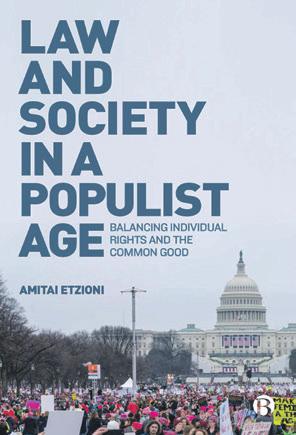
Publisher’s price £14.99
Save £1.80
Booklaunch price £13.19 inc. free UK delivery
To buy this book, visit www.booklaunch.london/sales
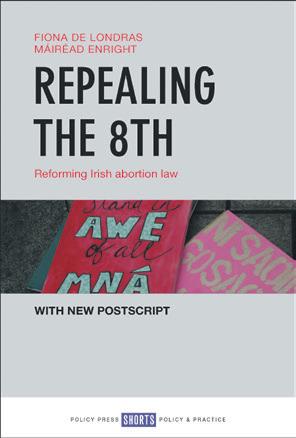
WOMEN, WORK, AND ECONOMIC GROWTH LEVELING THE PLAYING FIELD

Kalpana Kochhar, Sonali Jain-Chandra, Monique Newiak (eds) International Monetary Fund (Washington), Softback, 9781513516103, Illustrated, 180 pages, 155 mm x 229 mm, 2017
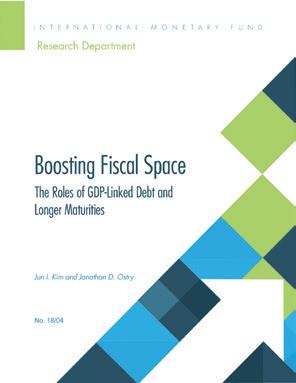

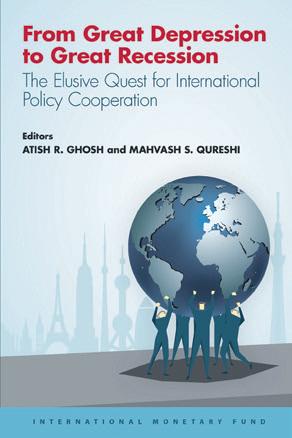
Gender-Based Restrictions across Countries, 2014. Source: Organisation for Economic Co-operation and Development, Social Institutions and Gender Index (SIGI). www.genderindex.org. Note: Numbers in the map indicate SIGI ranking (1 = very low degree of discrimination in the lightest colour, 5 = very high degree of discrimination in darkest colour). Numbers inside countries denote countries’ rank among all assessed countries (1 = best).
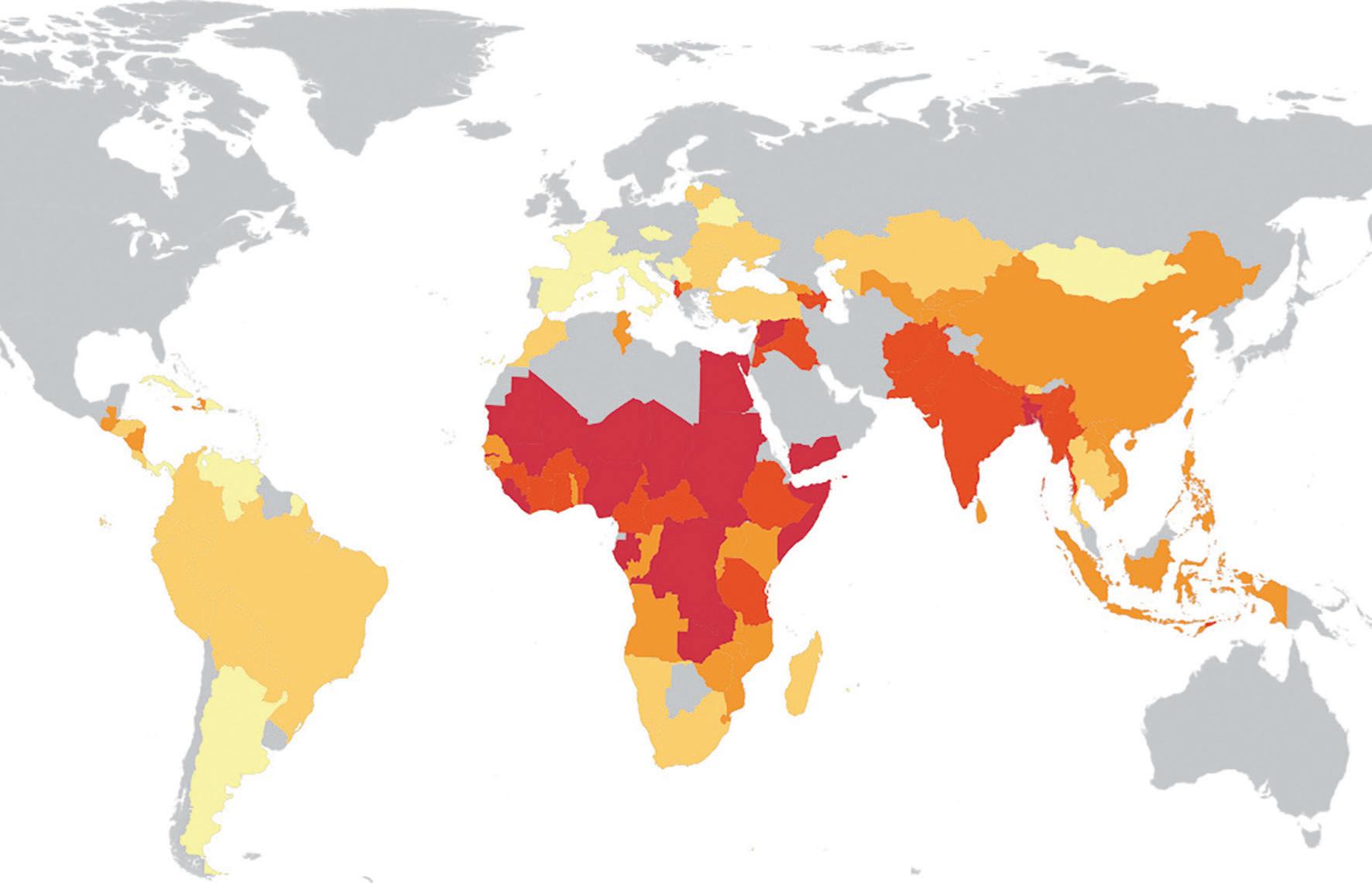
IMF books are not available commercially, except direct from the IMF website: www.imf.org/en
When men and women are subject to different laws, women typically face institutions that are stacked against them. Can these differences explain the gap between male and female labour force participation, specifically whether such legal differences in treatment have an impact on female labour force participation rates over and above such determinants as demographic characteristics, educational gaps, and family policies?
Our empirical analysis is enabled through use of the World Bank’s Women, Business and the Law (WBL) database, which focuses on how laws and regulations differentiate between men and women and, in turn, alter incentives to join the labour force. The WBL database is based on existing laws (de jure) and does not take into account how laws are put into practice (de facto). As a result, in the absence of comprehensive data on the practical application of laws across countries, this chapter relates existing legal restrictions to gender gaps in participation.
The WBL database provides detailed information on legal and regulatory barriers to women’s economic participation and entrepreneurial activity in 173 countries. It also focuses on seven indicators of gender-related differences in the legal and institutional framework:
• Accessing institutions—Women’s legal ability to interact with public authorities (for example, the acquisition of national identity cards)
• Using property—A woman’s legal rights to own, control, and inherit property
• Getting a job—Restrictions on women’s work (for example, restrictions on night shifts for women)
• Providing incentives to work—Tax considerations (such as tax credits and deductions available to women relative to men)
• Building credit—Access to finance
• Going to court—Access to small claims court and the weight provided to a woman’s testimony
• Protecting women from violence—The strength of laws to prevent violence against women
Some countries have numerous legal restrictions, with 30 countries having in place 10 or more restrictions on women’s participation. Only 18 economies were found to have no legal differences in the treatment of economic rights for men and women. In contrast, the WBL data suggest that almost 90 percent of the economies have at least one restriction on economic activity by women.
The nature of the restrictions varies across countries. In 18 countries, husbands can prevent their wives from working, and laws or regulations in 100 countries restrict non-pregnant and non-nursing women from pursuing the same economic activities as men. Other restrictions impede women’s property rights and thereby their access to finance.
Specifically, the World Bank and International
Finance Corporation (IFC) (2015) shows that in countries with property rights more favorable to women, there is greater financial inclusion of women (10 percentage points more bank accounts owned by women). Gender-based differences in property rights also make it more difficult for women to deploy immovable property as collateral in order access credit.
There has been a steady easing of legal restrictions against women and thereby a gradual leveling of the playing field in most countries. For two WBL indicators—accessing institutions and using property—the data set provides detailed information for 100 economies spanning the period from 1960 to 2010. The data show that more than half the restrictions in accessing institutions and using property in place in 1960 had been removed by 2010. In particular, 280 changes took place in the gender-based legal framework, mostly in the areas of introducing a nondiscrimination clause based on gender, female property rights, and the legal ability of married woman to get a job and pursue a profession. The restriction on married women working (for example, needing their husbands’ permission) was removed in 23 countries (for example, by Turkey in 2001 and in South Africa and Guatemala in 1998). Restrictions on married women opening a bank account were relaxed in 20 countries, including by Mozambique in 2004 and Lesotho in 2006.
The progress has continued in the recent years, with several countries passing or changing their laws in favour of more gender inequality since May 2013. For instance, Egypt’s new constitution features ‘sex’ as a new category in its non-discrimination clause. In Belarus, the number of professions in which work by women is prohibited was reduced from 252 to 182. In Nicaragua and Togo, men and women now have equal rights to be the head of household. In Kenya, a new law on matrimonial property gives both spouses equal rights to administer joint property. But despite this progress, there are still many gender-related restrictions in place, particularly in the Middle East and north Africa, sub-Saharan Africa, and south Asia.
The continued prevalence of gender bias in jurisdictions is confirmed by rankings from related databases as well. One of these is the ‘Social Institutions and Gender Index’ (SIGI) of the Organisation for Economic Co-operation and Development (OECD), which is highly correlated with a number of subcomponents of the WBL, including equal inheritance rights and the rights of women to get a job or pursue a profession. Similarly, country rankings in the World Economic Forum’s Global Gender Gap Index are highly correlated with those in the WBL and SIGI databases.
The data suggest a strong relationship between
Find
In November 2017 the Alianza Nacional de Campesinas, representing 700,000 female farmworkers and women in farmworker families across the US, wrote a letter of solidarity to the Hollywood women at the centre of #MeToo. ‘We do not work under bright stage lights or on the big screen,’ the letter said. ‘We work in the shadows of society in isolated fields and packinghouses that are out of sight and out of mind.’ Nevertheless, it continued, ‘we believe and stand with you.’ The question left unasked, taken up in discussions in the days that followed, was: ‘will you believe and stand with us?’
This question inspired the Time’s Up initiative, a legal defence fund to help women in all industries fight sexual harassment. The first meeting was held at the home of actor Jessica Chastain; other white actors involved included Reese Witherspoon, Natalie Portman, Nicole Kidman, Amber Tamblyn, Jennifer Aniston and Margot Robbie. But women of colour were also at the forefront from the start. The founders of Time’s Up included National Women’s Law Center president Fatima Goss Graves, producer Shonda Rhimes, actors Rashida Jones, America Ferrara, Eva Longoria, Lena Waithe and Kerry Washington, and director Ava DuVernay. In 2018 Time’s Up awarded $750,000 in grants to 18 organisations across the US supporting low-wage workers.
The profile of women of colour in such a mainstream initiative made Time’s Up a departure from the norm. Nevertheless, it was criticised for being an ‘exclusive club’ and concentrating too much on white celebrities. It was also accused of using activists of colour as window dressing: for instance, at the 2018 Golden Globes, when eight white Hollywood stars each took an activist as their ‘plus ones’. Time’s Up occupies a complex position in a feminist mainstream dominated by white and privileged women. Even when women of colour are in leadership roles, the pull of whiteness is strong.
This is the trouble with mainstream feminism, encapsulated in the title of my book Me, Not You. The #MeToo movement, started as a programme of work by Black feminist and civil rights activist Tarana Burke in 2006, went viral as a hashtag 11 years later after a tweet by white actor Alyssa Milano. And mainstream movements such as #MeToo have often built on and co-opted the work of women of colour while refusing to learn from them or centre their concerns. Far too often the message is not ‘Me, Too’ but ‘Me, Not You’. And this is not just a lack of solidarity. Privileged white women also sacrifice more marginalised people to achieve our aims, or even define them as enemies when they get in our way.
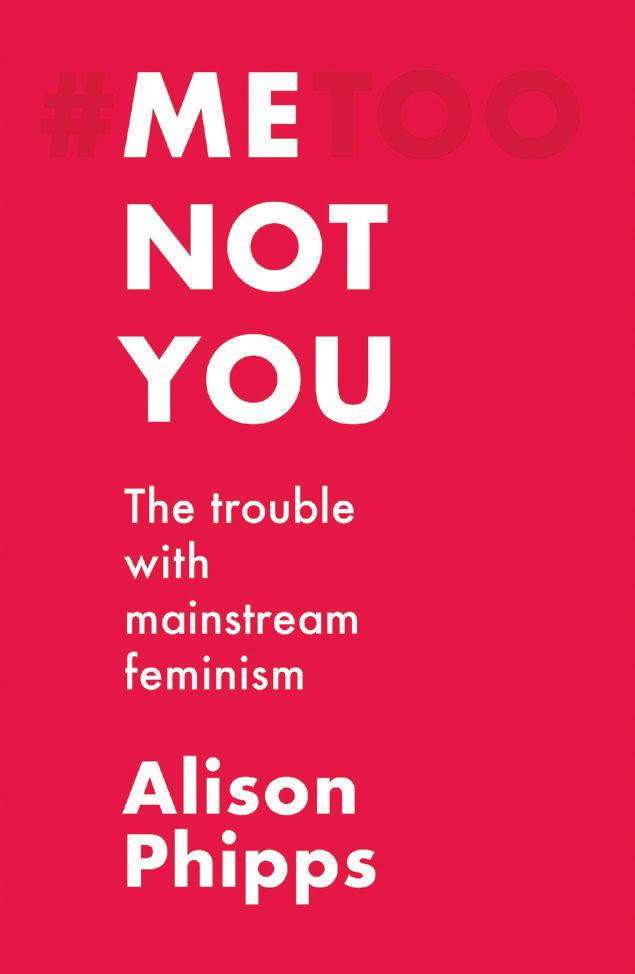
#MeToo is a movement about sexual violence, most of which is perpetrated by cisgender men. This book is also about violence—especially the violence we can do in the name of fighting sexual violence. When I say ‘we’, I mainly mean white women and white feminists. This book is addressed to my fellow white feminists; although it is dedicated to Black feminists, they will not need to read it. For feminists of colour, the arguments I make here will probably be nothing new (and I hope this book will help ease the burden of constantly having to explain whiteness to white women).
I am ambivalent about writing about whiteness: I am concerned, as some readers might also be, that in critiquing whiteness from within, I am trying to absolve myself of my own. I am worried that I am trying to be one of the ‘good white people’ who perform what feminist scholar Sara Ahmed calls a ‘whiteness that is anxious about itself’.
And deep down, that might be the case. Whiteness is wily: white supremacy is so embedded in our psyches that we end up doing it even while we claim (and believe) it is what we oppose. You are entitled—even invited—to make up your own minds about my motivations. But regardless of why you think I have written it, I hope you find something in this book of value. And if not, I am happy to be told I am wrong: knowledge is always partial, and we learn through dialogue with one another.
My analysis of mainstream feminism comes from 15 years of research on, and activism around, sexual violence. I am a white academic in this field, with all the privileges that entails. But my experience of it has been ambivalent and complex. I experience class anxiety in academia. My politics tend to differ from those of many other scholars and activists in my area, as well as (in other ways) those of my family of origin. I am what Sara Ahmed would call a ‘wilful child’: I do not fit in. I am also a queer woman with non-paradigm experiences of sexual trauma.
To understand all these things, I have repeatedly
turned to the words and actions of Black feminists and other feminists of colour, trans women and sex workers (and women who fit two or more of these categories). Their ideas are what Ahmed would call my feminist bricks; it has been my privilege to spread some mortar between them.
This is a book about mainstream feminism. And by this I mean mostly Anglo-American public feminism. This includes media feminism (and some forms of social media feminism) or what media scholar Sarah Banet-Weiser has called ‘popular feminism’: the feminist ideas and politics that circulate on mainstream platforms. It also includes institutional feminism, corporate feminism and policy feminism: the feminism that tends to dominate in universities, government bodies, private companies and international NGOs. This is not a cohesive and unified movement, but it has clear directions and effects. In other texts, it has been called ‘neoliberal feminism’, ‘lean-in’ feminism and ‘feminism for the 1%’. This is because it wants power within the existing system, rather than an end to the status quo.
Mainstream feminism, exemplified by campaigns such as #MeToo, tends to set the agenda for parliamentary politics, institutional reform and corporate equality work. It tends to be highly visible internationally because Western media forms are dominant across the globe. But this mainstream movement is by no means the whole of feminist politics. I am aware that defining ‘feminism’ as white and privileged risks (re)constituting it as such and I do not want to erase the fundamental contributions of feminists of colour. A founding assumption of this book is that the mainstream Anglo-American movement is often taken to represent feminism, when in fact it does not.
White and privileged women dominate mainstream feminism. These demographics shape the movement’s politics but are perhaps partially hidden by monikers such as ‘neoliberal feminism’, ‘popular feminism’ and the rest. In contrast, this book centres race, giving an additional reading of the movement at a time when white supremacy is being violently reasserted.
There is already increasing discussion of ‘white feminism’, used to denote a feminism that ignores the ideas and struggles of women of colour. This book is based on the concept of political whiteness, which describes a set of values, orientations and behaviours that go deeper than that. These include narcissism, alertness to threat and an accompanying will to power. And perhaps most crucially, they characterise mainstream feminism and other politics dominated by privileged white people. They link movements such as #MeToo with the backlashes against them. And they link more reactionary forms of white feminism with the far right.

Political whiteness tends to be visibly enacted by privileged white people (but can cross class boundaries) and can also be enacted by people of colour because it describes a relationship to white supremacist systems rather than an identity per se. It is produced by the interaction between supremacy and victimhood: the latter includes the genuine victimisation at the centre of #MeToo and similar movements, and the imagined victimhood of misogynist, racist and other reactionary politics. I am not denying that mainstream feminism is rooted in real experiences of oppression and trauma. I am not saying that these experiences do not deserve to be taken seriously. But I am asking: how are these experiences politicised, and what do they do?
My analysis of mainstream feminism is grounded in the principle of intersectionality. Developed by Kimberlé Crenshaw and other Black feminist scholars, this refers to the complex relationships that make up our social world—relationships between categories such as race, class and gender, and between the associated oppressions of racism, classism and sexism. These are produced by intersecting systems: heteropatriarchy, racial capitalism and colonialism.
Patriarchy refers to the domination of women by men. This pre-dates capitalism (at least in the West), but capitalism embedded it by separating production and reproduction and making women responsible for the latter. Capitalism relies on social reproduction—creation of and care for human life—but doesn’t want to foot the bill. Historically, white bourgeois home-makers were confined, unpaid, to the private sphere. Working women have been (and are) over-represented in the low-status and low-paid caring professions which also
Publisher’s price £12.99
Save £1.56
Booklaunch price £11.43
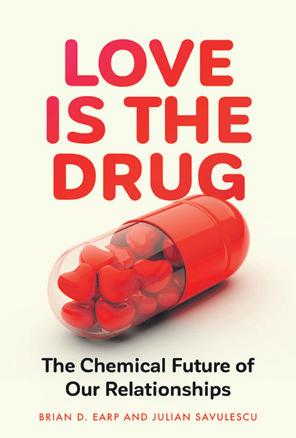

inc. free UK delivery
To buy this book, visit www.booklaunch.london/sales
White feminists may be playing into the hands of the resurgent
As a fashion enthusiast who doesn’t wear a hijab but has always tried to dress modestly from the neck down, I’ve waited for mainstream acceptance of modest fashion for over two decades. I … never anticipated seeing a whole Wikipedia page dedicated to modest fashion, or a news story in the Guardian titled ‘The end of cleavage: how sexy clothes lost their allure.’ Nor did I ever imagine I would type in vogue.com and be greeted by an image of two Caucasian models in black jumpers and trench coats, with their faces bordered by tight-fitting black headscarves, topped off with black hats.
It’s clear that modest fashion is being embraced by millions of women who have no religious affiliations, as well as Christians, Orthodox Jews and Muslims. Not to mention the style movement that’s gaining traction with men, who are eschewing sagging pants and muscle vests for more polished looks, in the name of modesty.
So I can’t help but ask—what is driving this trend, and why is it happening now?

While modesty is relevant to consumers of all … faiths and backgrounds, it’s retailers’ preconceived notions of Muslim and Middle Eastern wealth that is the reason for modest wear skyrocketing into the mainstream over the past few years. Author Shelina Janmohamed, who uses the phrase ‘Generation M’ to refer to the growing group of young Muslim millennials and entrepreneurs who share the characteristics of faith and modernity, points out that while Muslims may welcome the industry’s increased focus on modest wear, it’s not a black-andwhite embracement of diversity. ‘While reaching out to Muslim consumers might leave their audience with a warm fuzzy feeling, there are financial incentives too,’ Shelina claims.
In 2015, Muslim consumers worldwide spent around US $243 billion on clothing, with around US $44 billion, or 18 percent, on modest fashion purchases by Muslim women, according to the ‘State of the Global Islamic Economy Report’ from Reuters and DinarStandard.

The report estimates that by 2021, Muslim consumer spending worldwide will reach US $368 billion—a 51 percent increase from 2015. Muslims are expected to account for 30 percent of the global population by 2030, with more than 50 percent of that population aged under twenty-five. Their spending power, attributed mainly to Middle Eastern millennials, is what the global fashion industry is now scrambling to attract.
In an article about the modest fashion industry for Bustle, journalist S.I. Rosenbaum writes, ‘Financially, its biggest engine is the global Muslim market, particularly in wealthy but devout Gulf nations with money to spend and religious standards to keep up.’ And so, still reeling from recurring global recessions, more brands are turning their eyes to Middle Eastern wealth.
These population projections and financial motives are no secret—it’s widely recognized across the globe that international fashion labels’ increasingly covered-up runway presentations are not paying homage to Middle Eastern cultures, but rather to their deep pockets. ‘It would of course be naive to ignore the fact that modest clothing is another way to market towards consumers from Muslim-majority countries with young populations and many, many petrol dollars,’ states Kashmira Gander in the Independent.
Professor Reina Lewis, British art historian and cultural studies lecturer at the London College of Fashion, has extensively studied the contemporary evolution of modest dress. She found that, before modesty began trending, early Islamic-based lifestyle magazines struggled to convince the press offices of fashion houses to loan them products for their fashion shoots, as they didn’t view the predominantly Muslim readerships as target audiences for their fashions. Some stylists and editors had to resort to deceptive devices, like hiding the fact that their publications were in any way aligned with Muslims, to get their hands on these coveted clothes. Now, the tables have turned.
It’s impossible to ignore the undeniable financial potential unlocked by businesses that take special steps to cater to Muslim consumers. As I reach my 30s, after gaining a master’s in Islamic Law from the University of London’s School of Oriental and African Studies (SOAS) and working for a decade as a fashion journalist in the Middle East, I’m often finding it difficult to reconcile my two worlds.
Though at the age of 14, I believed ‘Modest is Hottest’ to be a catchy, clever and relevant slogan that summed
up my world view, the social media obsession that many fellow millennials are afflicted with has led me to question the way in which the modest style revolution has used digital means to communicate its message to consumers worldwide. In Islam, modesty is encouraged to promote a certain veil of privacy between men and women. But where’s the privacy in sharing selfies— albeit conservatively dressed ones—on Instagram to billions of strangers? If women are using apps like Instagram to show off their skin-covering outfits, are they still embodying the Islamic ideal of modesty?
Plus, there’s a whole other dispute brought up by this style revolution. While hordes of fashion bloggers on social media may celebrate it, there are many women for whom the term ‘modest fashion’ feels like an insult.
Julie Burchill slammed the concept of modest fashion in an article for the Daily Mail. ‘What I don’t like at all is when modesty is used as a shaming stick which women use to beat other women,’ she writes. ‘When applied to clothing, the word implies, by default, that any other form of dressing is immodest, that is, tarty, exhibitionist and “wrong”.’
The argument is not a solely Western one. Many women of Asian and Middle Eastern heritages, for whom modesty may have been strictly enforced in their own upbringings, are staunchly against using the word ‘modest’ to promote a certain way of dressing. Gita Sahgal, a prominent Indian writer on feminism, fundamentalism and women’s rights, claims, ‘Whether they know it or not, the global fashion business is marching in step with Islamists when they create lines of “modest” clothing—as opposed to a range of choices for women and girls.’
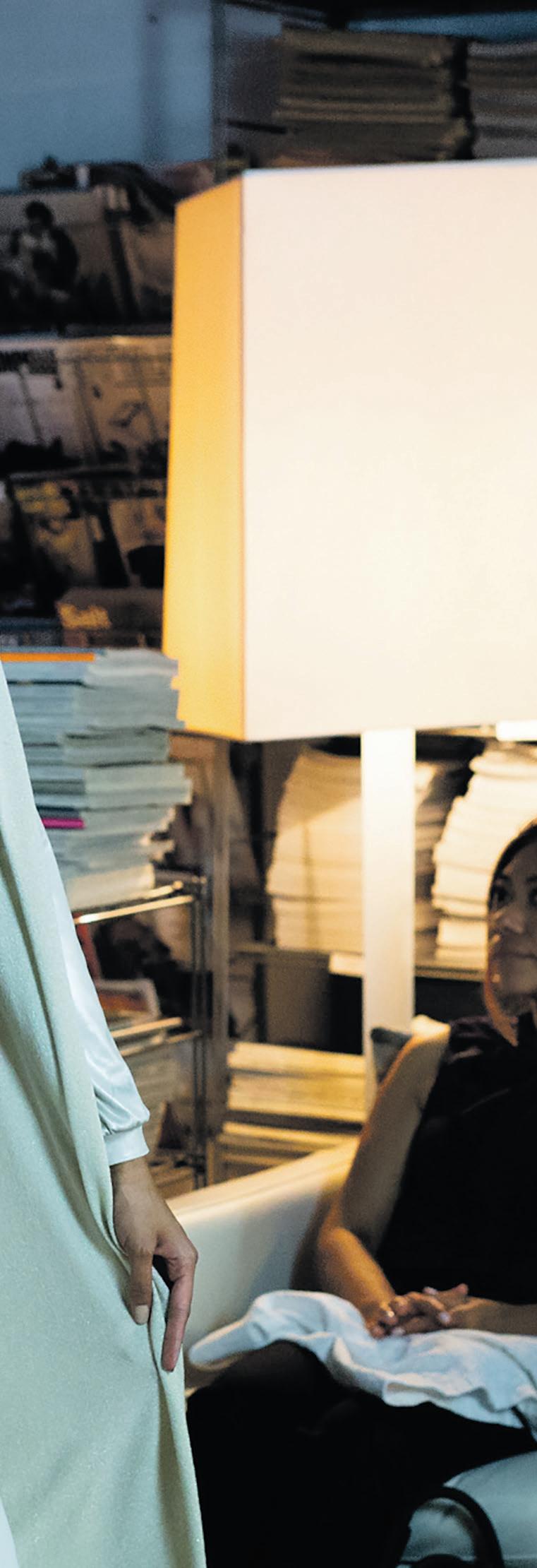
‘Islamists promote hijab for political reasons, the fashion industry complies to make money. It is a nasty alliance,’ claims Iranian activist Maryam Namazie, who says that ‘modesty culture’ teaches girls from a young age that if they fail to dress modestly, they will become vulnerable to violence from predatory men, who are unable to resist sexual urges. ‘Women have been fighting modesty rules for as long as the rules have existed, but what is worrying is the return to the mainstream of modesty rules, albeit packaged in a lovely silk-chiffon … Whether via acid attacks or Dolce & Gabbana adverts, the message is clear: a good woman is a modest one.’
Some women argue that the modest styles currently in vogue appear overtly elitist, and are only suited to certain body types and budgets. ‘Only those blessed with the privileges money and slim looks bring, these women seemed to suggest, could get away with wearing a dress that evokes virginal drabness at best and cult-style patriarchal oppression at worst,’ writes Naomi Fry in a New York Times Style Magazine feature titled ‘Modest Dressing, as a Virtue’. She points out that popular television show The Handmaid’s Tale, based on the novel by Margaret Atwood, uses modest clothing—namely longsleeved, ankle-length dresses and cloaks, in addition to head coverings for handmaids and servants—to connote obedience and submission.
While it may be true that in some Middle Eastern and Asian communities, conservative dress is enforced upon women—be it by their governments or patriarchal families—many women in the West are adamant that dressing modestly, whether that includes a headscarf or not, can be liberating. Personal interpretations of modesty vary among different women, but the resounding message at the crux of the movement is one and the same: choosing to cover up is a matter of personal choice.
Women who opt for more layers and fabrics over the comparatively bare offerings in stores are making the profound decision to take ownership of their bodies, rather than succumb to Western societal pressures that deem a woman’s body—or her hair—to be her ultimate beauty, which she should use to attract men.
And the modest silhouettes that are now infiltrating storefronts are providing these women with an abundance of stylish options—their covered up outfits need not be dull, ill-fitting or uninspiring. Instead, they can exude character and confidence, with the layers, colors, patterns and accessories combining to create an armor that’s fashioned from motives far more meaningful than frivolous trends.
Soon after the September 11 terrorist attacks, New York’s Democratic congresswoman Carolyn Maloney donned attire that is worn by a minority of Muslim women, influenced by the countries where they live and the cultural dress norms handed down from
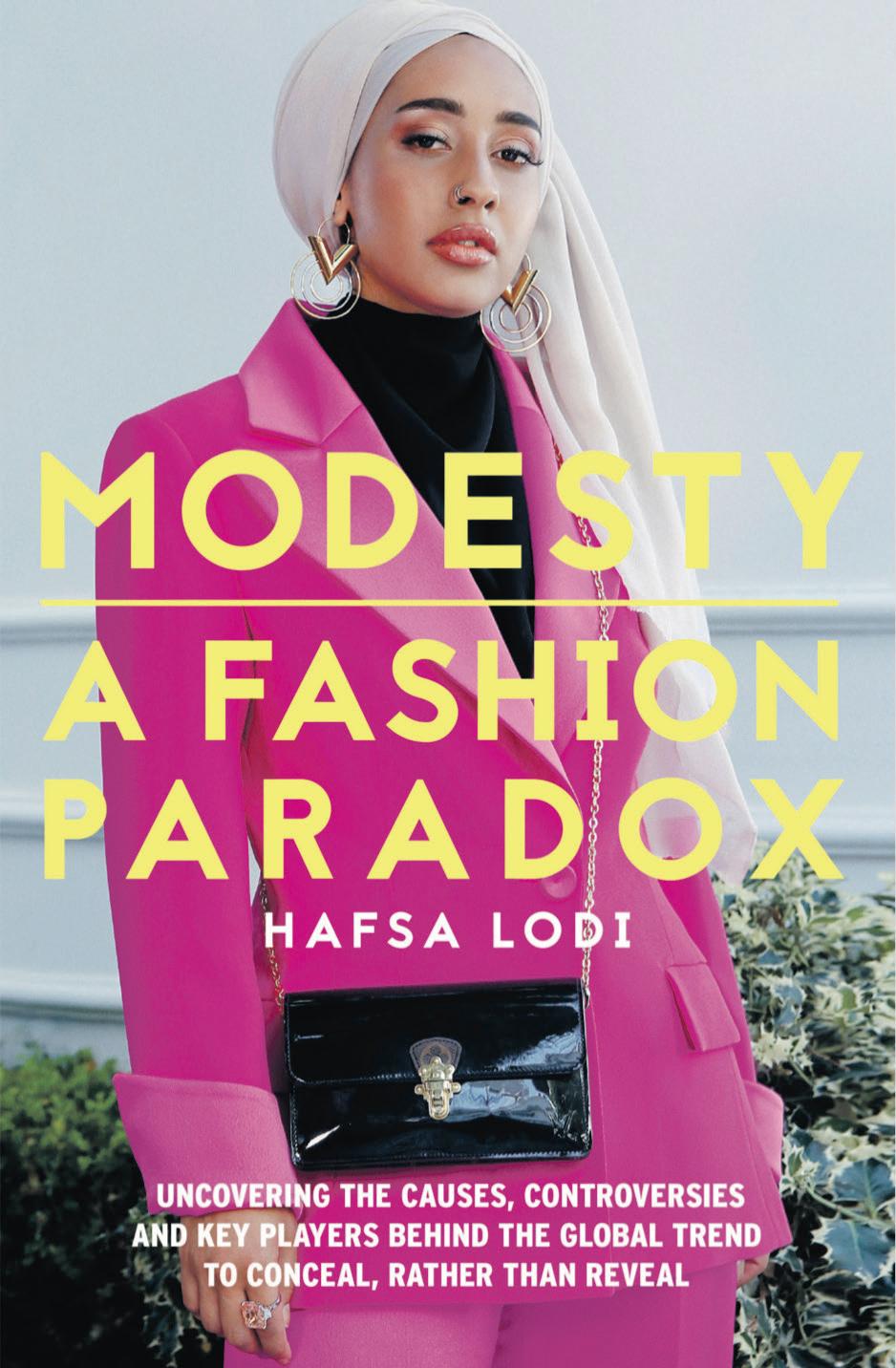
Hafsa Lodi
Neem Tree Press (London), Softback, 9781911107262, 258 pages, 25 col. photos, 156 mm x 234 mm, 19 March 2020
Publisher’s price £20.00 Save £5.01
Booklaunch price £14.99 inc. free UK delivery
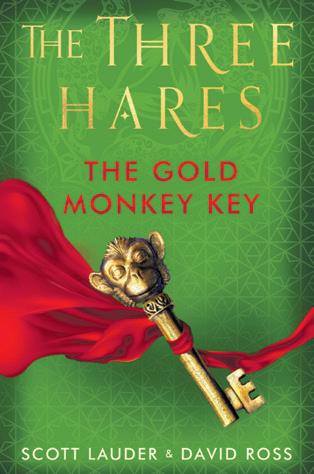
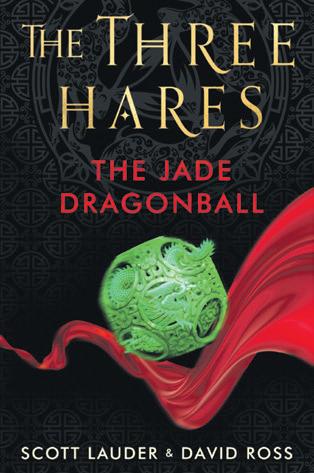
To buy this book, visit www.booklaunch.london/sales
FROM
The interwar semi has tended to be regarded as an object lesson in ‘bad design’, all the better to demonstrate the virtues of modern mass production exemplified by bent plywood and tubular steel furniture. In this book I challenge the dominance of Modernist aesthetics and values on writing on design, architecture and consumption by exploring popular conceptions of the ‘modern’ that accommodated past and present, nostalgia and modernity within their social and historical contexts.
I stress suburbanites’ own agency as consumers, especially where they resisted and contested official notions of ‘good’ taste and design. And I question the way ‘period’ rooms in museums [are] nearly always seen through the lens of the invented retrospective term ‘Art Deco’. As Mark Turner, the former curator of Middlesex University’s Silver Studio Collection, said,
In all the years I have spent looking at untouched interwar houses, I have never once seen an interior that was the riot of Art Deco Moderne which museums and television would have us believe was typical. Very few suburban residents could buy all their furniture new and immediately. Pieces were acquired as money allowed, and Modernism was thought to be more appropriate for easily replaceable wallpaper and mats.
What we now call Art Deco was referred to at the time by terms such as ‘Jazz Modern’, ‘Modernistic’ or ‘Moderne’ and I have adopted the term ‘Modernistic’. … This book will contribute to recent literature by art and design historians on ‘other’ modernisms. For example, Christopher Reed argues that what he terms the ‘amusing style’ was a specific form of modernity formulated by the Bloomsbury set in their homes. Michael Saler suggests that the Arts and Crafts movement inspired ‘Medieval Modernism’ in the design of the London Underground. Paul Greenhalgh describes an ‘English compromise’ as a response to Modernism. Alan Powers identifies a ‘modern George VI style’.
Publisher’s
Booklaunch
To
However, these studies are few and far between, and design historians have lagged behind literary critics such as Nicola Humble, Alison Light, Melissa Sullivan and Sophie Blanch, who have exhaustively studied multiple Modernisms, particularly focusing on what they term ‘middlebrow’ writers, outside the canon of literary Modernism.
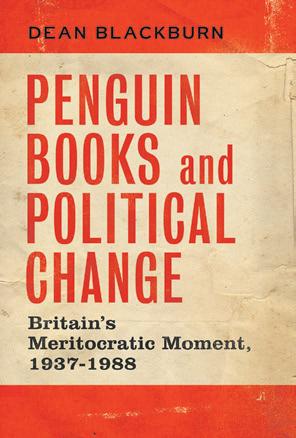

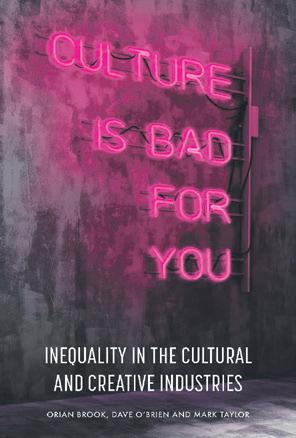
The meaning of objects is not just formed by designers but also throughout their lives by users. This is especially useful for understanding objects for which there is no known designer or readily identifiable style. Design historians and art historians have been influenced by social anthropologists who investigate how objects embody sets of social relations and acquire values and symbolism through use, and help form personal identities.
The interwar house
How did the domestic design of the interwar suburban home in England both dictate and express the identities and sense of belonging of homeowners to wider communities and networks, including their hopes, desires and aspirations?

I have spent a great deal of time poring over the surviving representations and actual material culture of the home in repositories such as Middlesex University’s Museum of Domestic Design and Architecture, Getty Images (which incorporates the Hulton Picture Library, which supplied publications such as Picture Post), newspapers (especially the Daily Mail) and the publications and records of the Daily Mail Ideal Home exhibitions. I have also scoured antique shops and fairs, auctions, car boot fairs, charity shops and eBay as well as exhibitions, advice manuals, trade literature, advertisements, magazines, novels, memoirs, photographs and films as well as actual examples of suburban architecture, interiors and material culture.
I have been influenced by novels and memoirs, both interwar and contemporary, in which stories of houses and home-making activities feature prominently. Several books present biographies of houses fused with personal memoir, notably Julie Myerson’s Home: The Story of Everyone Who Ever Lived in Our House (2005), Rosa Ainley’s 2 Ennerdale Drive: An Unauthorised Biography (2011) and Margaret Forster’s My Life in Houses (2014). Akiko Busch’s Geography of Home: Writings on Where We Live (1999) and Ben Highmore’s The Great Indoors: At Home in the Modern British House (2014) also deserve particular mention for their fusion of historical and sociological observations on the design and
use of the twentieth-century home with the authors’ own experiences.
Snapshots
One of the biggest challenges has been to try and capture the domestic design of the interwar home as it was inhabited and lived in. I looked hard for photographs of lived interiors in modest semi-detached homes that had not been tidied up for the camera. They have proved elusive. However, photographs of working-class rented homes from the interwar period, particularly slum dwellings, are more readily available. These continued a tradition of photography as a tool of social exploration that started with John Thomson in the 1870s and continued in the twentieth century with the post-First World War concern with slum clearance and the ethnography of Humphrey Spender’s Mass Observation photographs. A rich vein of interwar photographs reveal slum interiors located in older 19th- and 18th-century buildings.
One case in point is a photograph of a working-class home showing a family eating a meal in their kitchen/ living room. Washing is strung over the table and there is a traditional range. Yet on the wall there is startling Modernistic wallpaper. I found many other examples where the modernity of some of the interior decoration is in striking contrast with items from an older period.
Most often this takes the form of wallpaper in a riot of ‘Jazz Modern’ patterns, which could be purchased cheaply and was frequently papered over previous layers. Or sometimes it is a small item of ceramics, such as a vase depicting a camel, no doubt influenced by the Egyptomania craze that followed the discovery of the tomb of Tutankhamen. Modernistic elements sit alongside traditional Windsor chairs and the piece of lace that covers the mantelshelf over the range.
Photographs like this suggest a sense of ‘making do’ and point to a human need for colour, pattern and modernity. They also go some way to explaining why such wallpaper might have been seen in its time by designers and cultural critics as cheap, nasty and vulgar—in ‘bad taste’ and as an example of ‘bad design’.
Relatively few people decorated their homes, or went out and bought brand new furniture and furnishings, all in one go. Moreover, few subscribed to one particular style, and fewer still to the tenets of Modernist ‘good design’ advocated by the design reformers of the interwar years. New homeowners who had struggled to scrape together the deposit for their houses and strained to make the monthly repayments often had to manage with borrowed things. There was a thriving market in second-hand furniture, with some big furniture shops selling used furniture alongside brand new.
However, if they were given a choice and had the means, many opted for new furniture but in a reassuring traditional form. They did not value antique furniture for its patina, which for them was associated with dirt and making do. Moreover, it was common for people to hang on to their furniture for years, whether for sentimental or purely pragmatic reasons.
Consequently, when I have been lucky enough to stumble upon unstaged amateur photographs, which are nearly always undated, they are also nearly always impossible to place within a design history chronology of style, progress and fashion.
For many, the home they made in the interwar years stayed very much the same for subsequent years once it was ‘done’. The modernity or otherwise of the interwar years stalled because of the Second World War. Rationing and austerity compelled people to ‘make do and mend’, as a government campaign advised. After the war, exhibitions such as ‘Britain Can Make It’ (1946) and the Festival of Britain (1951) promised the modernity of the ‘Contemporary Style’. In the dream palace of the cinema, British audiences swooned over the new consumer world of goods depicted in American films. However, even if such luxuries as a fitted kitchen made of Formica were available, for the majority they remained firmly out of reach, prohibited by cost and lack of credit.
In his Homes Sweet Homes (1939), which satirised the interwar English obsession with homemaking, the cartoonist Osbert Lancaster commented on a noted tendency to produce multi-purpose objects:
It is significant that the Old English fondness for disguising everything as something else now attained the dimensions of a serious pathological affliction. Gramophones masquerade as cocktail cabinets; cocktail
Age wasn’t always respected in old buildings; past layers tended to be stripped away. That changed in the 1870s, when the “anti-scrape” movement started to value the accretions of time. In his new book, Richard Griffiths gives examples of how his own architectural practice has adapted cathedrals, castles, stately homes, hotels and old industrial buildings to face the future without misrepresenting their past












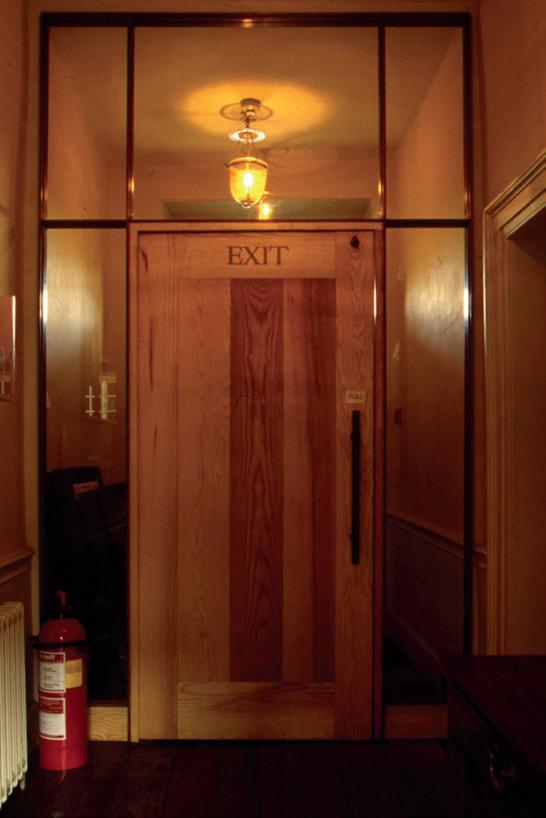





Publisher’s price £30.00 Save £5.00
Booklaunch price £25.00 inc. free UK delivery
To buy this book, visit www.booklaunch.london/sales
Richard GriffithsAt a dinner in Cape Town, just after South Africa’s first democratic government had taken office, someone said “I am starting to miss apartheid.” For a few moments the conversation ceased. Had the diners not been senior members of the ANC, the comment would have been intolerable. But everyone there had been in the front line of the battle against apartheid, in a rainbow alliance of whites and Blacks, politicians and church leaders, trade unionists and academics, students and activists. All were united by a common cause.
Then the silence was broken—by chuckles, and nods of understanding; the speaker was missing the clearer battle lines, the more obvious enemies, the friendships forged in hardship. Michael Holman was at that dinner. He has been writing about Africa all his life and his journalism over those years is now looking to be published
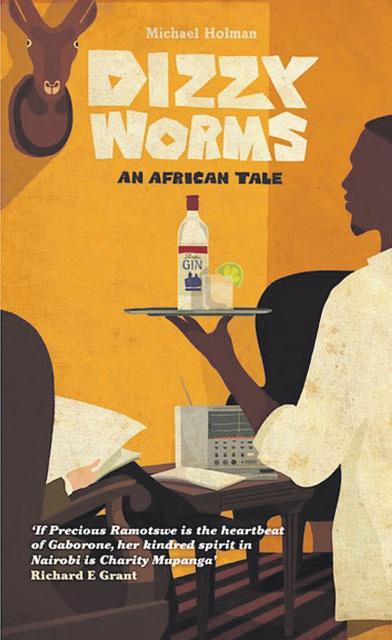
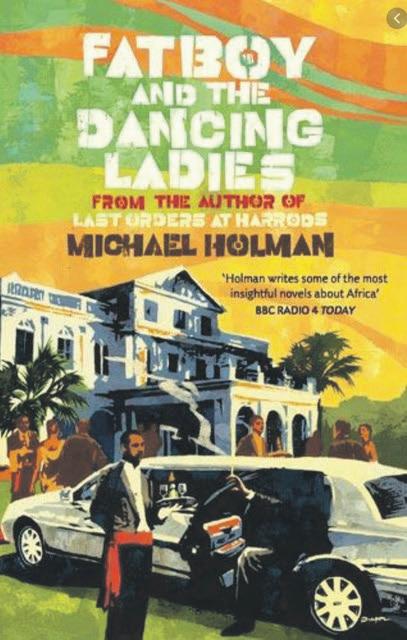
Michael Holman has spent his life working for the Financial Times, first as a correspondent, later as its Africa editor. He was brought up in a small town in Rhodesia (Zimbabwe) by his Cornish father and white South-African mother. While a student he was restricted to his home town of Gwelo (now Gweru) after being named a danger to the the state by a Rhodesian MP. Released after a year, he took a post-graduate degree at Edinburgh University, thanks to the intervention of Malcolm Rifkind, then a young lecturer in Rhodesia. He has had Parkinson’s disease since 1986 and had a pioneering deep-brain electrode operation in 2006. He has written three novels, set in East Africa, and continues to write for the FT and other papers
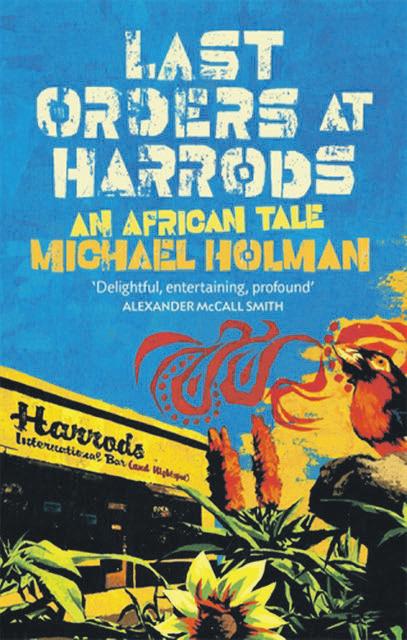
1974. An obituary in the British South Africa police magazine Outpost begins:
The term ‘complete Rhodesian’ can be applied to several local personalities but never with as much justification as when we refer to the late Police Reservist Delville Vincent who was killed in action (against guerrillas) in Northern Mashonaland on April 3, 1973. Del was born in South Africa in 1929 …
And that is, and will be, Rhodesia in the 1970s. White immigrants dying, defending with the gun the country whites took by the gun.
Because we’re all Rhodesians and we’ll fight through thick and thin, We’ll keep our land a free land, stop the enemy coming in, We’ll keep them north of the Zambezi till that river’s running dry, And this mighty land will prosper ’cos Rhodesians never die.
We’ll preserve this little nation for our children’s children too, Once you’ve known Rhodesia no other land will do. We will stand in the sunshine with truth upon our side, If we have to go alone we’ll go alone with pride.
This charming ditty, ‘Rhodesians never die,’ is sung by an immigrant (he happens to be Prime Minister Ian Smith’s son-in-law). He is one of 60 per cent of the ‘white Rhodesians’ who were born outside Rhodesia.
I met another immigrant not very long ago. Hitching from Gwelo, in the heart of the Rhodesian Midlands, my friend and I were given a lift. The driver was a young, lean, deeply-tanned South African farmer, with a broad Afrikaans accent. He managed a pyrethrum estate on the eastern border. No, he didn’t miss his home. ‘You can talk to the munts (Blacks) here; you can’t in South Africa. Here I can say, “Bugger off, you shithouse.” I say that in South Africa and I get into trouble. You just can’t talk to the munts there anymore.’
One reason for his satisfactory labour relations no doubt lies in the fact that Black agricultural workers and domestic servants—no less than 55 per cent of all Blacks in employment—work under the Masters and Servants Act. This harsh and archaic piece of legislation (‘it is illegal in terms of the Act for any of his family, by desire of his master on any journey within southern Rhodesia … on which his master orders him to go …’) was enacted in 1901 and is based on legislation introduced into the Cape Province of South Africa in 1856. There is no provision in the act for trade unionism, collective bargaining, or other wage setting machinery. No wage minimum is established under the Act.
You can, however, get guidance on wages—as far as domestic servants are concerned—from the Information Booklet issued to new members of staff by the University of Rhodesia Women’s Club. It recommends $10–$12 a month plus rations (one dollar is about 75 pence) and ‘Hours of indoor servants are usually about twelve hours in duration’—two more than the minimum permitted by the Master and Servants Act.
The wages of Black farm workers average about $10–$15 a month plus rations. In real terms there has been a decline in their income over the past decade. There is a farm workers union, but there is also a catch: it does not receive recognition and is thus prevented from acting as a negotiating body. There is not the slightest chance that it will be recognised.
Addressing one farmers’ meeting, an official of the Rhodesia National Farmers Union warned: ‘Trade unions are ready and willing to exploit any grievance the worker may have. A recent example was the intervention of Mr Mpofu (the general secretary of the Plantation and Agriculture Workers Union) at a chicken farm near Salisbury. A pay dispute was built up by this individual to include grievances over housing and latrines and many other aspects the employees had not originally complained of.’ Both Mr Mpofu and the president of the union were restricted last year, joining about 60 of their colleagues from other unions.
‘We have a very sympathetic Minister of Labour,’ the official continued, ‘and you can rest assured that an agricultural trade union will not get recognition’ (the speech from which I take these extracts was not published).
Seventeen of the 49 RF (Rhodesia Front) MPs are farmers; 10 of the 18 cabinet ministers are farmers.
One must assume that former British Prime Minister
Mr Harold Macmillan was not aware of the Masters and Servants Act—and several other acts for that matter— when he wrote (in the last volume of his memoirs) that before the Rhodesia Front came to power in 1962 Rhodesia enjoyed ‘a tradition of moderation and even of liberalism’. But he is not the only one who believes in this tradition. His successor, Sir Alec Douglas Home, does too, and so does the main white opposition in the country, the Rhodesia Party, who see themselves as the inheritors of that tradition. ‘Rhodesia’s long and proud history of racial tolerance, harmony and understanding,’ proclaims the RF manifesto, ‘is today yielding to petty and unnecessary racialism.’
After persistent questioning Allan Savory (leader of the RP) admitted to me that the RP does not see its way clear to pledging repeal of the Act should it ever get into power.
The truth of the belief in this tradition of ‘moderation’ is possibly not as important as the role it plays in British policy. Around the belief is built the theory that as pressure on white rule increases, so white Rhodesians, becoming aware of their folly and their predicament, will get together and sort things out.
Every one of the dozen or so by-elections since Mr Smith’s Unilateral Declaration of Independence puts the theory to the test, and always it takes a battering when RF candidates are returned by substantial majorities, occasionally being threatened by extreme right-wing candidates. The two by-elections on February 28 this year were no exception.
The votes in the two constituencies were:
Sinoia-Umvukwes: RF 553, RP 249, Rhodesia National Party (extreme right wing) 199, Centre Party (moderate white) 27,
Raylton, Bulawayo: RF 783, RP 371, CP 31.
Yet the pressures on white rule were apparent in February not simply to those with inside information, but to all those who read the leading daily, the Rhodesia Herald. Three whites were killed in guerrilla attacks in the Centenary area, which is part of the Sinoia constituency (in the north east of Rhodesia) just ten days or so before voting took place.
Men over 25 with no military commitments at present are now liable to call-up periods of one month. Rhodesians look with concern at Mozambique as rail links with the coast come under attack by Frelimo (the Mozambique Liberation Front). Hardly a day goes by without anxious reference to a black birth rate of 3.6 per cent which annually exceeds the white population of 280,000 in Salisbury. Stringent petrol rationing began in February due more to a shortage of vital foreign exchange than any supply problem.
All this and much else is public knowledge. Yet in the ninth year of UDI there is little evidence that the Rhodesia Front is losing any substantial support. I visited Centenary the day after the shootings, but I heard no reappraisal of white rule, no questions about the cost of white rule. Instead there were demands from local farmers for harsher punishment of tribesmen and farm workers who aided ‘terrorists’. (Although just two weeks previously 110 tribesmen had been taken into custody at Bindura, for allegedly collaborating with guerrillas in the murder of several Africans in the Madziwa TTL. Their crops and huts were destroyed and their cattle impounded. The Rhodesia Herald, falling over itself in an effort to plug the government line, headlined the news: TERROR MURDERERS AIDED BY TRIBESMEN although they had no evidence other than the allegations in the government communique.) The farmers also wanted a dusk-to-dawn curfew in the area, and the right to shoot ‘anything that moved’ during the curfew period.
The cattle impounded on the above and other occasions [MEANING?] are generally sold. There have been cases where the cattle have been shot. One needs to know something of the importance of cattle to the people to appreciate the enormity of this. Cattle are not measured in terms of so many pence per pound of flesh. One black writer says: ‘A family without cattle in Shona society is like a house built on sand … Cattle are the enduring foundation of traditional Shona society.’ Their slaughter is part of the ritual at marriage and death. ‘They plough the fields and carry crops … pull carts.’ ‘In Shona society, one’s social status and wealth are determined by numbers of cattle. Thus to have many cattle is the summit of a Shona’s desire. Except in cases
The Joy of Water offers personal stories of wild swimming and magical coves in more than 60 locations around the world. Use your time in lockdown to plan snorkelling trips in Mozambique’s coral reefs, soaks in Iceland’s geothermal pools and dives with nonstinging jellyfish in Palau



THE JOY OF WATER Lonely Planet (London) Hardback, 9781838690465, Illustrated, 272 pages, 200 mm x 200 mm, 10th April 2020


Publisher’s price £15.99

Save £1.92
Booklaunch price £14.07 inc. free UK delivery
To buy this book, visit www.booklaunch.london/sales

The Jarawa tribe, in India’s Andaman Islands off the coast of Burma, used to keep its distance from Western intruders. That is no longer possible. In his new book, Jonathan Lawley, whose family has roots in the area going back five generations, makes an impassioned plea to stop the Indian authorities treating the Jarawa like a human zoo
How is it that an illegal new road running through the pristine forests of the remote Andaman Islands threatens the oldest tribe of human beings in the whole world—people who for thousands of years have fought fiercely to avoid all contact with civilization which they rightly see as threatening their culture, way of life and very existence?
The Andamans, with the Nicobar Islands, are one of eight territories or provinces administered by India. Whereas the Nicobarese, who originate from Asia and inhabit the southern islands, have always had trading relations with neighbouring countries, the Andamanese tribes—whose provenance until recently nobody knew— always kept themselves to themselves.
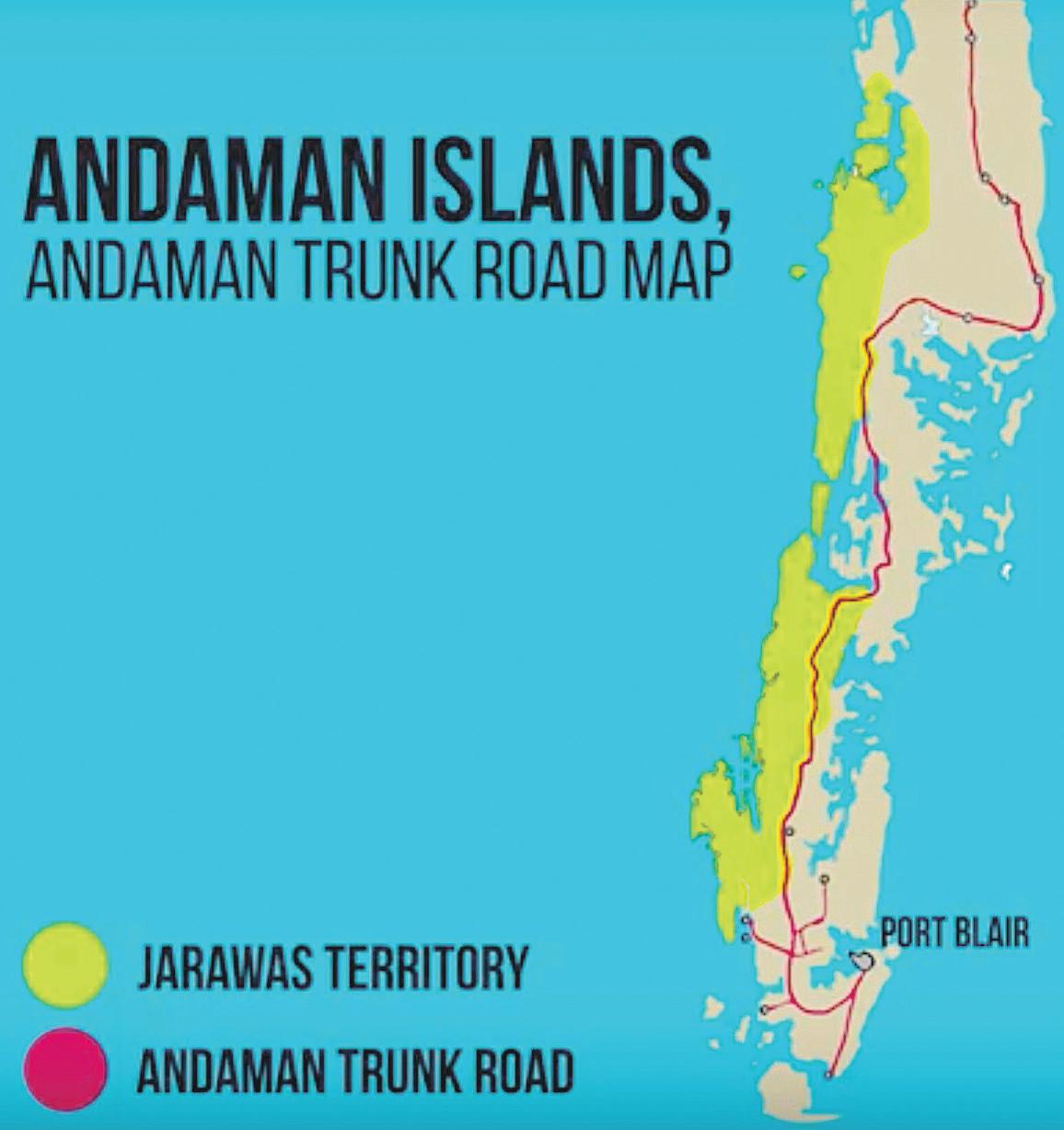
Work on the Andaman Trunk Road (ATR) started in the 1970s without reference to the people. When workers started to be killed by members of the Jarawa tribe, construction was officially banned by the Indian Supreme Court but continued none the less. In 2002 the court ordered the closure of the new road but financial pressures kept it open. The disaster that the Jarawa had fought for centuries to prevent then started to unfold.
Prospects for the Jarawa have been in rapid decline since Indian independence in 1947 and the arrival of new settlers, particularly refugees from Bangladesh and Burma, as well as Indian ex-servicemen, to set up villages on what the Jarawa have always regarded as traditional tribal land.
Under British rule—apart from Port Blair, neighbouring settlements in the south of South Andaman, a small hospital at Kadamtala, and a few outposts and trading posts along the coasts—virtually the whole island chain was regarded as the domain of the aboriginal native tribes. Travel was uniformly by sea. My grandfather’s travels when he was supervising the censuses of 1911 and 1921 were entirely by boat. Thus all contact with the tribes took place on the coast, not inland, and in accordance with British policy they were left to continue the age-old way of life they valued so much, leaving untouched the forest interior where they hunted wild pig and collected food and medicine.
Until the arrival of the settlers there was no need for a road. Besides, any pressure to build it could have been resisted by the local administrators had they thought about the likely effect on the Jarawa. The consequences of the road should have been obvious; unfortunately, no one gave any consideration to the tribes and their need above all to be left alone. Thus it was that, without significant opposition, construction went ahead. In the teeth of official Indian government policy, the local authorities tacitly welcomed the road and the settlers that it attracted. In retaliation, the Jarawa began to attack the settlements and steal settler crops and possessions.
It was then that a Jarawa boy called Enmi broke his leg during a tribal raid and his treatment in hospital in Port Blair produced a degree of reconciliation, with the result that travel along the ATR suddenly became much safer. Incidents continued, however, with a visiting minister and a newly set-up police outpost being robbed at arrowpoint.

A new factor now arose, one destined to have more lasting consequences than anything else. It came from the wish among mainly local entrepreneurs—bus and taxi owners and hoteliers—to exploit the road for what some in the West might term ‘eco-tourism’. It would be truer to say that there were massive profits to be made from exploiting the desire of tourists to see their strange, aboriginal neighbours. Suddenly, visitors started to arrive in large numbers from the Indian mainland.
My elder daughter Juliet and I got a perspective on the phenomenon when we flew into Port Blair in mid2018. I am not sure quite what we expected; a quiet little island airport with small aircraft bringing in perhaps two or three dozen tourists a day. I was astounded by the reality. The airport was heaving with tourists: there were thousands arriving and leaving each day. One morning we visited the great expanse in the middle of the city where hundreds of vehicles, their exhausts belching clouds of smoke, headed off in convoys for the ATR.
The vast majority of the tourists were middle-class Indians intrigued at the prospect of seeing naked stoneage people on Indian soil. The Andamans are now the most popular of all destinations for Indian tourists, whose interest in historical sites like Ross Island and the Cellular Jail is limited. They crave encounters with humanity’s prehistoric peoples.
Access to the ATR is via the new road south through the city, passing the airport and swinging north to the Jiratang Check Point on the edge of the Jarawa Reserve.
There, travellers are greeted by huge notice boards setting out the Dos and Don’ts of driving along the ATR. These include the requirement for permits and driving only in convoy, and a ban on lifts and gifts for tribespeople and on photography.

The convoys with their police escorts start off along a narrow tarred road. Very soon they pass through thick jungle with enormous trees. Tropical rainforest vegetation makes up a mostly unspoiled landscape all along the ATR. Beneath the trees, many in flower, is a virtually impenetrable tangle of ferns, creepers and young trees growing in the rich volcanic soil, all struggling upwards towards the light.
The terrain is undulating, descending to fast-flowing streams, and the road takes long sweeps round low hills. From the higher points emerge a scattering of particularly tall trees. The vegetation thins out as you approach larger crystal-clear, rushing water courses. Here and there, from higher points, dramatic views open up over the seemingly unbroken canopy but mostly the dense tree cover hems us in. It is only when the long road skirts the east coast of South Andaman that the views suddenly become spectacular and reveal a watery vista towards Havelock and neighboring islands across the sea.
Turning inland again, the road reaches villages flanked by coconut, betel and areca plantations which intrude on the mass of the forest. In the early days of the road before 1997, there was always the danger of Jarawa attacks. Now that things are calmer, travelers along the ATR are more likely to see Jarawa women and children beside the road.
There is still a remote possibility that travelers can watch distant groups of Jarawa engaged in age-old activities such as gathering the jungle fruits and roots that make up their traditional diet. They may even see parties of men hunting wild boar or women collecting honey. Such sightings are highly prized.
By contract the women and children beside the road have their hands out and seem to be begging, and buses stop illegally so that the tourists can take photographs of them and hand out gifts, particularly packets of biscuits, but also torches, boxes of matches, clothing, and pots and pans. Sometimes tourists barter biscuits for honey or crabmeat, or a local bow and arrow or spear. The exchanges are invariably exploitative and unequal.
More and more the Jarawa are becoming used to handouts and dependent on them. This affects their diet, puts their good health at risk, and creates new tastes and expectations. Vehicles that do not stop are sometimes chased. A journalist wrote recently of the sad sight of women and children running alongside the road with arms outstretched shouting ‘do, do, do’ meaning, ‘give, give, give’ in Hindi.
Some in the Jarawa population see clearly what is happening to their tribe and seek to reverse the damage. The people of the Tirrur area are particularly keen to see a return to traditional behaviour because the encroachment of tourists and settler villages is affecting the Jarawa’s equilibrium, as well as altering and damaging perceptions of them. There have also been cases of sexual exploitation including prostitution and the filming of naked women and children performing dances in exchange for gifts. In at least one case this happened with the connivance of the policeman who was supposed to be protecting them.
Critics of the government point to the failure to prosecute settlers whose poaching of wild boar has degraded the environment, infuriates the Jarawa and attracts even stronger opposition than traffickers of alcohol and drugs.
I was moved recently by the quiet voices of two young Jarawa men interviewed for an internet broadcast. It was one of the first times that anyone from the tribe had spoken out. Until now their concerns had gone unrepresented because they preferred to avoid contact and were regarded as voiceless.
The two representatives spoke calmly and without emotion to the French journalist interviewing them. He had gained access to the Jarawa reserve via the ATR; had he broken in on them a few years earlier he might not have emerged from the jungle alive. The tribesmen spoke in their own language, saying that all they had seen of civilization was bad. They said the Jarawa had never been consulted about anything and added that they did not know what was going on or what to do about the future. Their traditional life gave them everything they needed and wanted, which was

India is allowing a palaeolithic tribe to become extinct. We have to act now
‘If the conflict between Iran and Saudi Arabia is resolved, then half of the Middle East conflicts will disappear,’ said one participant in a workshop organised to discuss the Iran–Saudi conflict and the prospects for its resolution. There is a plethora of excellent books and articles that thoroughly analyse this conflict, its history, driving mechanisms, dynamics, and impact on the overall region. Literature that rigorously assesses potential solutions is notably absent, however, and where such material exists, it looks solely at official steps that governments can take to resolve the conflict, or the track one approach.
This book attempts to fill that gap by doing three things: first, it takes a conflict resolution approach to assess how the conflict can be managed and effectively resolved, rather than simply examining what actions the two countries are currently undertaking. Second, it takes an integrated approach to the resolution, arguing that effective peacebuilding in this conflict needs to be applied on three levels: government, track two and grassroots. Third, it takes an interdisciplinary approach to present a coherent understanding of the drivers of the conflict.
With these three goals in mind, the book’s main argument is that the conflict between Iran and Saudi Arabia must be properly managed because better managed and regulated conflicts are better suited to resolution. At present, the Iran–Saudi conflict is a chaotic conflict heavily burdened by mistrust, lack of communication and clear ground rules, confusion about driving issues, and uncertainty about each party’s decision-making process. Under such circumstances, a conflict management strategy is a necessity.
Why is it a chaotic conflict? The Iran–Saudi rivalry started decades ago and has reached an unprecedented level of escalation, although the scholarly community remains divided about its core drivers. Sectarianism, security, competition over global leadership, geopolitics and even nationalism all appear to affect the conflict, with little distinction as to what ultimately drives the patterns of engagement and confrontation.
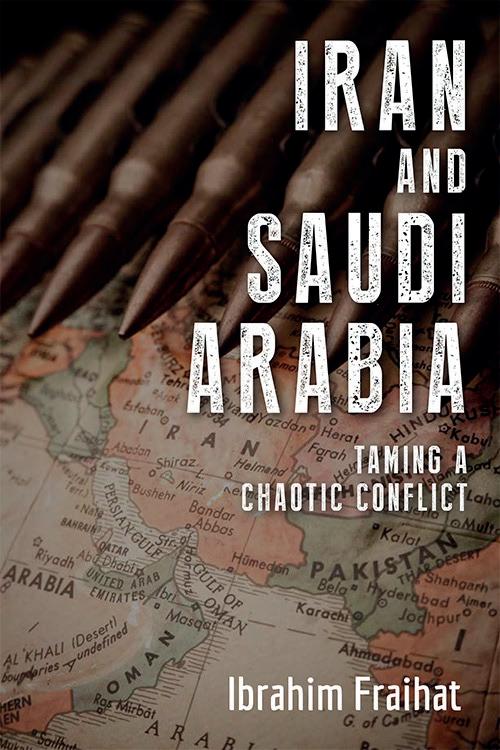
Furthermore, Saudi Arabia is confused about the proper strategy to respond to Iran, resorting on one hand to a regional proxy conflict approach in Syria, Lebanon, Yemen and Bahrain, and on the other to an overarching alliance with the United States and several other players. Iran’s opaque decision-making process further fuels this confusion about the correct approach for resolving conflict. As Robert Mason puts it, ‘factionalism has been a part of Iranian politics from the birth of the Islamic Republic of Iran.’ Certainly, it is difficult to know who makes the decisions on the conflict with Saudi Arabia, whether conservatives, moderates, the Supreme Leader, Revolutionary Guard, or the President, and it is therefore unclear with whom third-party intervention teams could engage to change the course of action.
The mixed messages coming from both parties (sometimes offering an olive branch and dialogue while at other times talking about controlling four Arab capitals) only add to the chaos of the conflict. Actions like cutting diplomatic relations and refusing to engage through other channels of communications, as well as an absence of clear ground rules to regulate engagement, make resolution elusive.
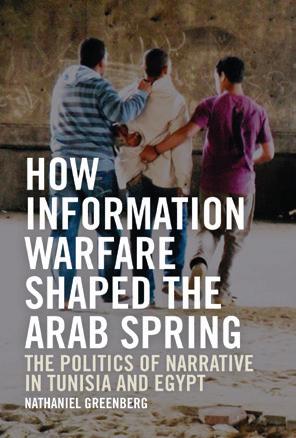
Contrary to the zero-sum approach propagated by both parties, this book proposes a model built on three pillars: accurate definition of the real issues; installation of a conflict management system to contain escalation and regulate conflict; and institution of an integrated resolution approach of track one, track two and grassroots that addresses the underlying causes and conditions of the conflict.
After decades, Iran and Saudi Arabia still disagree about what is driving their conflict. While Saudi Arabia claims that sectarianism is the key factor, Iran argues that the conflict essentially concerns the preservation of its national and regional security. Both parties refuse to acknowledge that this conflict is at least in part about regime legitimacy and the desire of governments of both states to take a leading role in the Muslim world.
What makes the conflict particularly complex is the clash of security needs and perceived ‘encirclement’ of both parties. Iran feels constantly threatened by the United States and Israel, as well as encircled by American military bases and areas of influence in, for example, Iraq, Saudi Arabia, Bahrain, Qatar, the UAE, Turkey and Afghanistan. Iran responds, in turn, by expanding its own areas of influence in Arab countries and in the
process leads Saudi Arabia to feel encircled—as Iran’s primary rival and ally of the United States—in Iraq, Syria, Lebanon and Yemen. Both Iran and Saudi Arabia are caught up in this security dilemma and have mistakenly adopted a strategy of escalation to resolve it.
Escalation conveniently serves the agendas of both regimes, and thus they feel no rush to change the course of action. By standing up to the ‘Great Satan’, Iran’s regime is internally legitimising its revolutionary rhetoric, distracting the attention of the Iranian people from its inability to deliver on the economic level, and validating its expansionist foreign policy in the neighbouring Arab countries. Meanwhile, standing up to the ‘expansionist Shia aggressor, Iran’, is serving the Saudi regime by silencing any domestic calls for political reform and keeping a united internal front under the regime’s reign.
Contrary to President Obama’s sectarian characterisation of this conflict as rooted in antagonisms that ‘date back millennia’, this conflict is not originally or essentially sectarian. Indeed, Shia-majority Iran supported Sunni-Palestinian Hamas and sided with Christian Armenia against Shia-majority Azerbaijan. By the same token, Sunni-majority Saudi Arabia supported the Shia Imamate in the 1960s in Yemen and the predominantly Christian March 14th alliance in Lebanon.
However, the politicisation of sectarianism by both parties has reinforced Iranian–Saudi animosity, thus furthering conflict escalation. Sectarianism here is an enabling factor rather than a cause of the rivalry. Nonetheless, the extensive and varied use of sectarianism by the governments, the mainstream media, major figures on social media, the clergy and even think tanks on both sides has turned sectarianism into a cause for further escalation of the conflict.

Resulting from the politicisation of sectarianism, both sides of the conflict have come to stand for their own sect. Iran appointed itself as the leader of the Shia world by assuming responsibility for protecting the Shia in Iraq, Yemen and Lebanon. Likewise, Saudi Arabia appointed itself as the leader of the Sunni world that would stand up to Iran and prevent the ‘Shia-isation’ in the Arab and Muslim majority countries.
A dangerous aspect of the Iran–Saudi conflict is its lack of a conflict management system that clearly outlines the ‘rules of the game’ and regulates the parties’ conflict behaviour. This will cause deeper damage through the sustained use of proxies in the region, potentially leading to a direct war between Riyadh and Tehran in the future. An effective conflict management system should include the following four components.
First, crisis management tools such as establishing a Riyadh–Tehran hotline, exchanging senior government visits, and forming technical committees to research win-win resolutions to the primary issues at hand, all factors that prevented the US–USSR Cold War escalating into an actual war.
Second, dialogue. There is deep mistrust between both sides as well as barely concealed hatred and even violence (though still carried out via proxies in the region). Only through open dialogue can these escalatory dynamics be altered. Unfortunately, in January 2016, Saudi Arabia formally severed diplomatic relations with Iran and thus shut down the official communication channels that could help in a better management of the conflict.
Third, small confidence-building measures—not to make Iran and Saudi Arabia like each other but to prepare for formal negotiations that address causes and issues. While dialogue and confidence-building measures aim to build a working relationship, the first is mostly about talking and clearing misperceptions while the latter is about taking action.
Fourth, peace zones. When Iran and Saudi Arabia disagree on means of resolving the core conflict issues (e.g. security and sectarianism), they can engage in conflict management exercises that aim to isolate certain issues (e.g. oil prices, Gulf maritime trade) and even countries (e.g. Oman, Bahrain) from the conflict. Riyadh and Tehran agreeing to avoid escalation in these domains would be an effective conflict-management strategy, which could help in a later formal resolution process. Regional players may choose to take things into their own hands and distance themselves from the conflict if Riyadh and Tehran fail to agree on a containment strategy, even establishing a non-aligned movement.
IRAN AND SAUDI ARABIA TAMING A CHAOTIC CONFLICT
Ibrahim Fraihat Edinburgh University Press (Edinburgh), Softback, 9781474466196, 224 pages, 157 mm x 234 mm, 28 Feb 2020
Publisher’s price £19.99 Save £3.00
Booklaunch price £16.99 inc. free UK delivery
To buy this book, visit www.booklaunch.london/sales

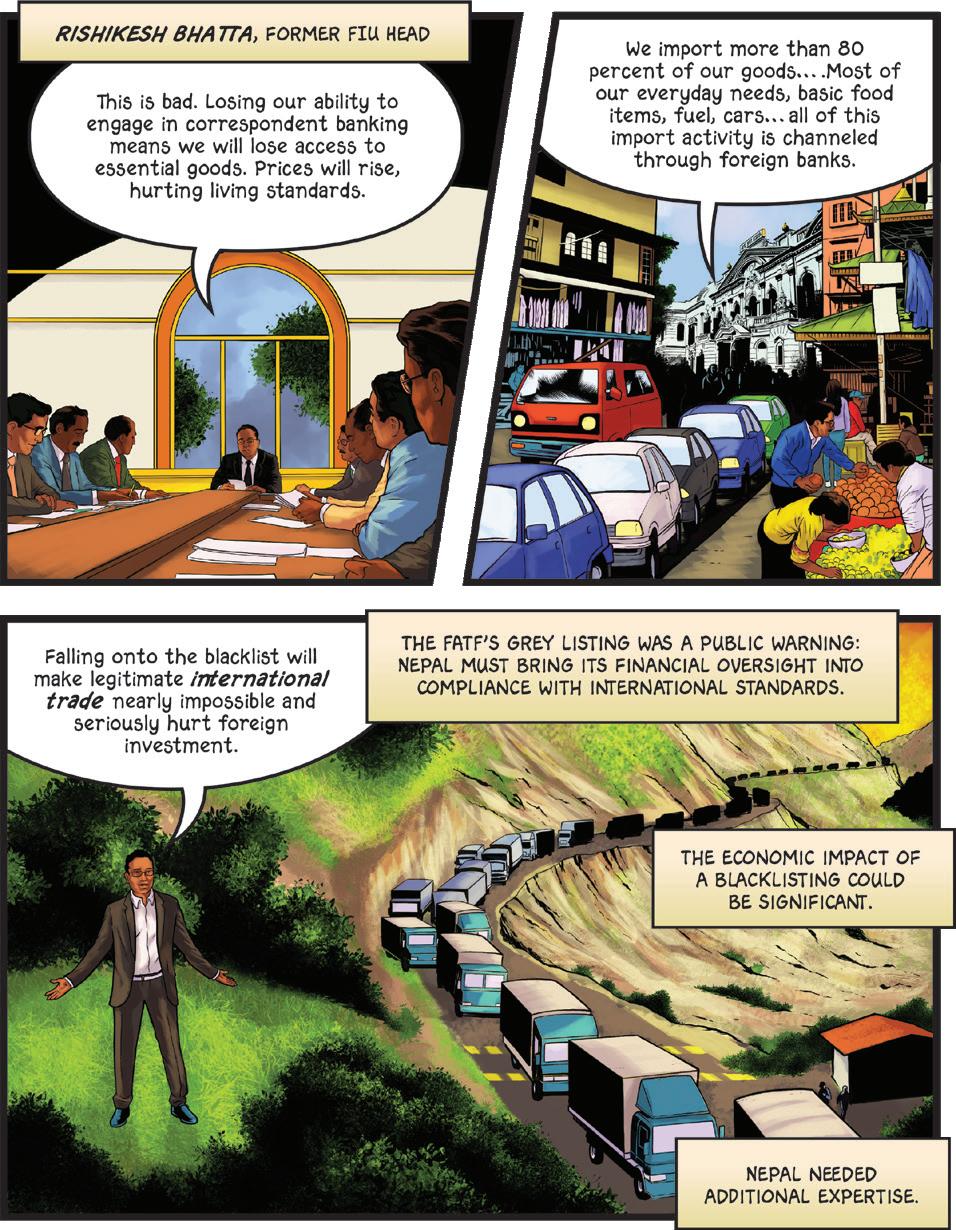

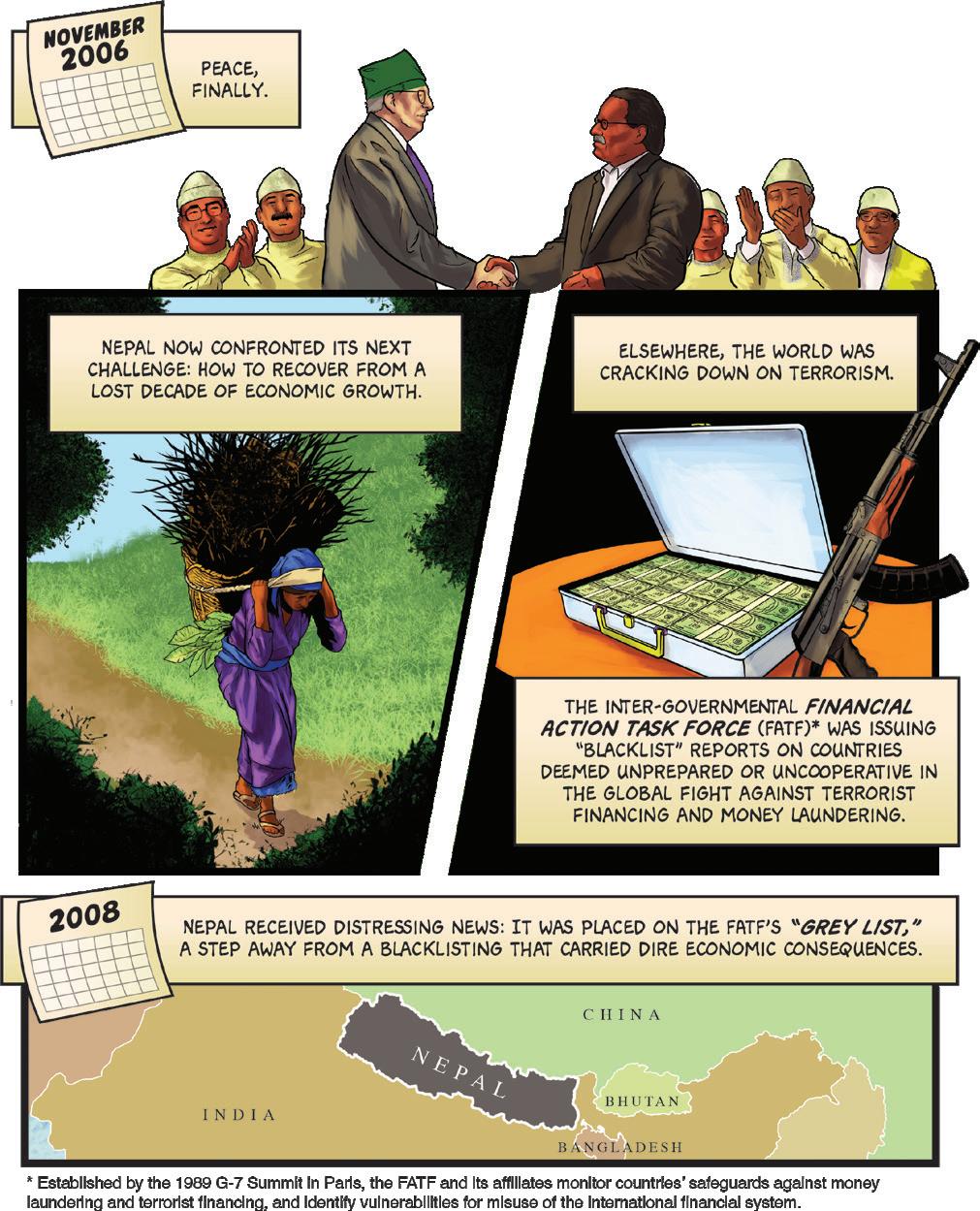
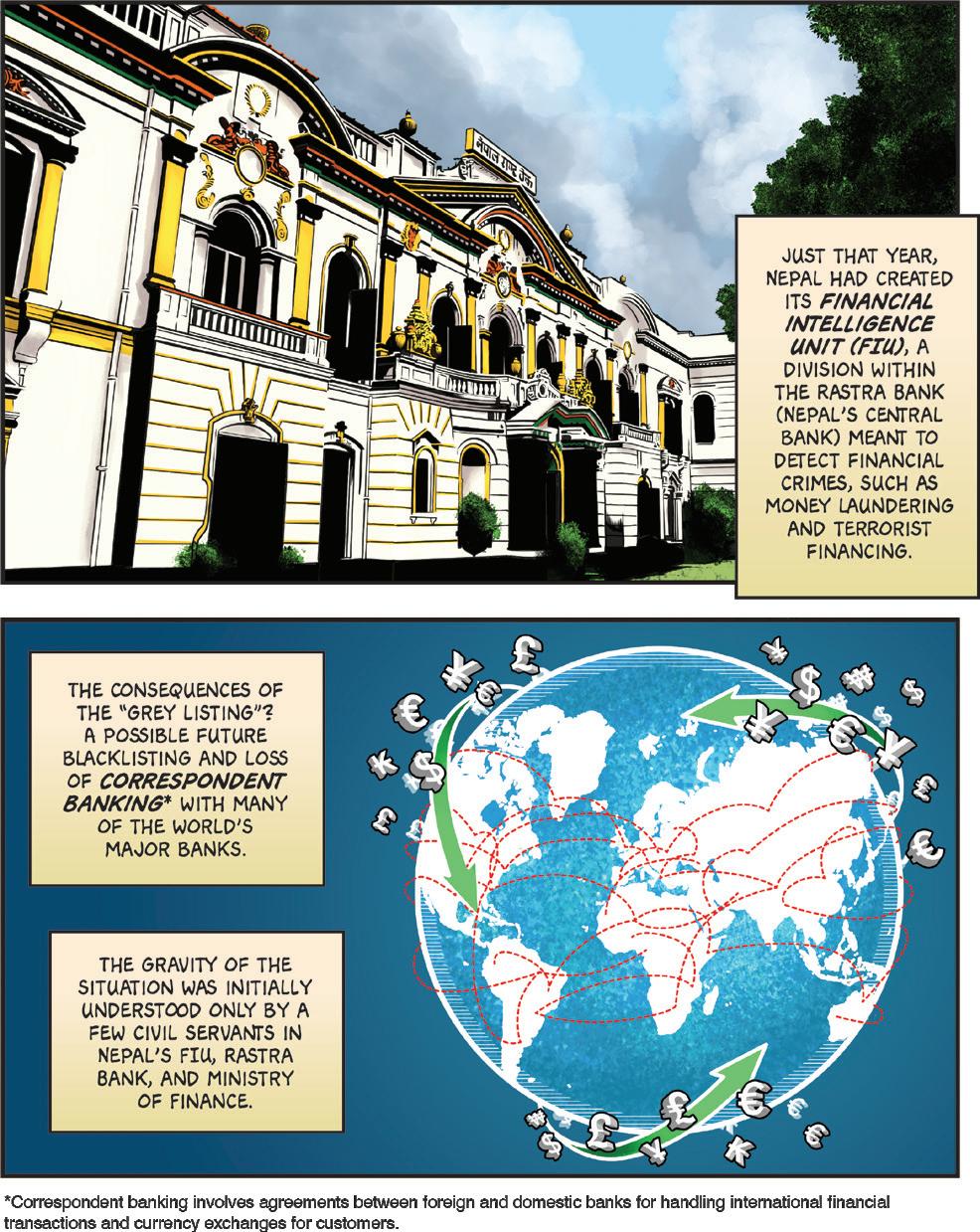
For 20 years Nepal struggled with civil unrest, insurgency, violence and human displacement. With peace in 2006 came the question of how to rebuild the economy. Two years later, it was put on a “Grey” list of countries failing to combat terrorist financing and money laundering. This is the story of the steps it took to avoid becoming an international pariah, and the conditions it created to attract investment and boost growth
NEPAL: INTO AND OUT OF THE GREY DEFENDING AGAINST MONEY LAUNDERING
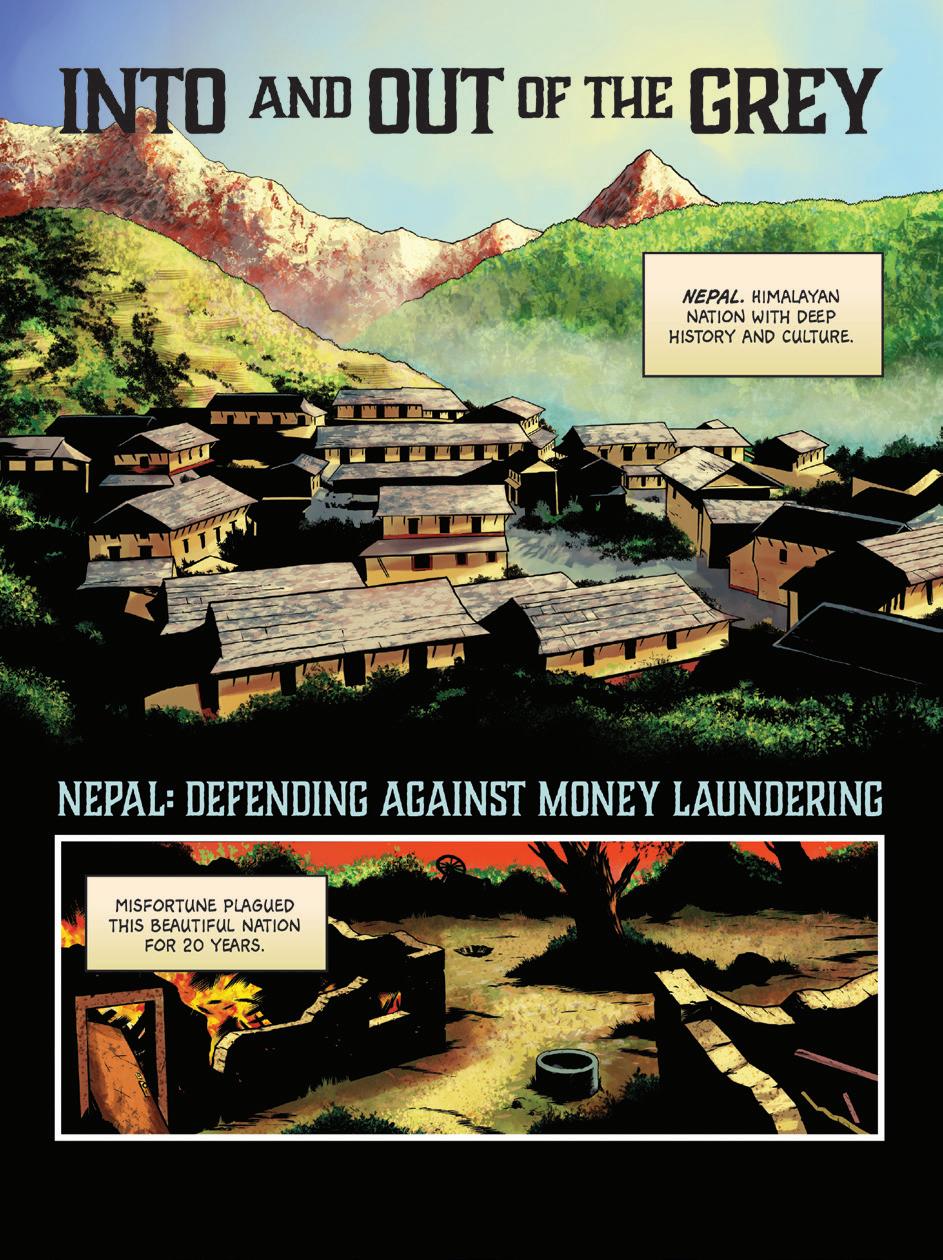
Words: Joseph Procopio and Amit Khetarpaul
Art: Steve Conley and Rick Veitch of Eureka Comics IMF, Softback, 9781484351444, 13 April 2018



Downloadable as a pdf from the IMF website: www.imf.org/en Books below only available in the UK via the IMF website



Jovial Mr Ferid, the entrepreneur, was one of the richest people in Chania. When the navies of four great countries anchored in the Chanian port of Souda, and the so-called temporary government was set up, he adopted French citizenship to protect himself and his property. That was during the 1897 uprising, the uprising that started with Venizelos shouting, ‘Turks out!’ and ‘Greece is great!’; the uprising that threw us from our homes and villages, forced people into the big cities to try and scratch a living; the uprising that sentenced some of us to die on the battlefield and left others to be strangled in their own fields.
As well as changing his nationality, Mr Ferid also swapped the fez on his head for a hat. Strangely enough, our women saw the fez as a sign of being a good Muslim whereas the Greeks thought it the sign of a dandy or a womaniser. The first time the great Mr Ferid greeted me, only a mere child at the time, is one of my most vivid memories. He used to pass us on his way back from the farm, ambling along on his Arab horse with a hide as smooth as leather, his booted feet in the stirrups, his hands gripping a silver-handled crop and the hat perched on his head.
‘Hello, my boy,’ he would say in Greek.
In fact, he always greeted me and the family in Greek although we also heard him speaking French. We heard that he was French, and we knew he didn’t really speak Greek. Whether he spoke any Turkish I couldn’t tell you. I always resented the fact that we didn’t really know Turkish, which must have been our original language, our mother tongue. The sultans went and scattered us here like seeds, but they didn’t take into account our heritage and future. How much impact could a few Turkish teachers sent over from Istanbul really have? Especially when you think about what kind of teachers they were.
I’m still preoccupied by this language issue. If I tell you that even the biggest braggarts amongst us only knew about fifty words of Turkish, please don’t think I’m making it up. Especially as the number of us who could read and write could be counted on two hands. Apart from these and a few others, the rest of us knew about ten to fifteen words and there was a further small number who could maybe muster up to fifty at best.
Take Mr Behçet, assistant to the Swiss head of the Joint Emigration Commission, and one of the few who really knew his Turkish: people said he had been educated in Istanbul and Paris. Whereas the rest of us would say, ‘Get here,’ he would say, ‘Come over here.’ As for the old Greek printer Vladimiros, he had picked up Turkish really well when he was a young man learning his trade in the Tahtakale district of Istanbul. Instead of pronouncing Tahtakale as it’s written, he used to enunciate each syllable ‘Taht-el-Kal-a’.
He was one of the reasonable, undogmatic Greeks and I benefited a lot from his great mind as well as his knowledge of Turkish.
I almost forgot to add that the most important thing was our religion. The one thing that kept Cretan Turks from being paralysed by the fear of falling victim to either individual or mass murder was our religion. Our villages were blockaded, our brothers and sisters were killed, and the priests and schools subjected us to a ‘Greekification’ campaign, but they all came to nothing. Our mother tongue had become Greek, and when we were in mourning, we wore black like the Greeks, but our religion ensured we never forgot our Turkishness. So much so, that if someone asked a Cretan Turk, in Greek of course, ‘Mehmed, are you a Turk?’ the typical reply would come, in very poignant Greek, ‘I swear in the name of Mary that I am a Turk!’
We were always immersed in both worlds. You can say as often as you like that it is religious unity that makes a nation a nation, as I’m sure in most cases is true, but the Cretans were an exception to the rule and in the most positive way.
We said, ‘We are Turks!’ but that was as far as it went.
It’s not that I want to put down our other communities of Turks, I just want to demonstrate how strong both our religious beliefs and our sense of community were. I’ll give you an example of how it was that some Cretans didn’t think they were completely descended from the Turks.
The first Turkish soldiers that came to the island in 1645 couldn’t have brought any women with them; it was some time after the final conquest of Crete, in 1669, when Turkish women came, or were brought from Rumelia and Anatolia; but that doesn’t mean to say that all of us had mothers from Anatolia or Rumelia. The Cretan Turks were descended from the Ottoman sol-
diers that came to the island: traced from a patriarchal line that completely overlooked women.

It was through this patriarchy, this discounting of women, that we survived and nurtured Turkish Muslim identity in our children. Sultan Ahmet III’s mother, her noble highness Rabia Gulnus Emetullah, was a Cretan. She was from Rethymnon, one of the first places occupied by the Ottoman soldiers. She gave birth to Ahmet in 1673, just four years after the final conquest, so in other words the Sultan’s future mother was a trophy of war, born and taken to the palace in Istanbul well before the seizure of Crete, thus making her of Venetian, Byzantine or North African origin.
Nevertheless, as I said before, we never forgot our allegiances. During the First World War, the Greeks took Cretan Turks into the army, dressed them in Greek uniforms and sent them to the front. These Turks in Greek uniforms were now Greek soldiers, and as such they were to battle with the enemies of the Greeks, to open fire on them. As it turned out, the soldiers hadn’t forgotten their Turkishness. They knew the Greeks’ enemies—Germany, Austria and Hungary—were the Ottomans’ allies, so they cast aside the rules of war and refused to open fire, saying, ‘Whoever is on the side of the Turks is with us.’
They ended up in a military court where they were sentenced to face a firing squad. If I remember rightly, the sentence was never carried out due to pressure exerted by a French general. I’m sure you will remember that it was this war that was the beginning of the end for the Ottoman State.

Let’s change the subject. When you think of war, with its dead bodies, destruction, massacres, hunger and sickness—what does it all matter in the end? To hell with it all!
Our village of about 300 people was called Kamish and the Greeks called it ‘Kalami’; both words mean ‘reed’. Years later, during the Second World War, from miles away in Ayvalık in Turkey, I heard on the radio that our village, along with the Kandanos district of which it was part, had been razed to the ground by Nazi war planes because of its relentless resistance to Nazi parachutists. Just a pile of rubble was left behind. What a bitter twist of fate and history—the place that had spewed our blood for forty days during my childhood was, forty-five years later, being punished by another barbarian force.
It was considered a fairly rich village with its olives, chestnuts, vineyards and vegetable plots. Mostly it produced olive oil and wine but also carob. There was plenty of the fruit we called ‘kitro’ or ‘tree melon’ growing there and we used it to make jam. People were always taken aback when they caught sight of it on the trees. Each branch could only hold one of these fruits, which weighed about a kilo, and they needed a little support from the ground to stay attached. Our Turkish girls, the Ayses and Fatmas, gathered olives and worked in the vegetable allotments, while the Greek girls, the Marias, Evredikis and Photinis, harvested grapes for the wineries. The Greeks produced olives and vegetables as well, but they produced much more grapes and wine.
Our village soil was fertile. At the edge of the village, there was a small meadow with a huge plane tree in it. Around the area of the tree was the meeting place of two peoples who had grown into each other; I could say peoples of two separate races, but it would be more honest to say two separate religions. There was just one taverna and it belonged to the Greek, Manusakis. In my early childhood, we used to pass by the door on the way back from the allotments and olive groves and I would greet him with a boyish ‘good evening’ which at the time I thought was very grown up. Manusakis would laugh and reply very sincerely, ‘Good evening, little Hassan.’
In later years, as a reward for running to the Greek grocer Hristakis for him, he would place a few pieces of the liver he was frying for the customers on to a coffee-cup saucer and hand it to me saying, ‘Just taste that, little Hassan!’
Sometimes it was a few whitebait that were brought in once or twice a week by villagers who had been to the seaside town of Paleochora in the south.
The journey used to take them three hours but the five or six oka of fish didn’t lose their freshness. The thought of those crispy fish fried in fresh olive oil! Don’t tell anyone I said this, but you don’t find wholesome, tasty snacks like that in today’s tavernas. The whitebait were held by their tails, two or three at a time,
Booklaunch
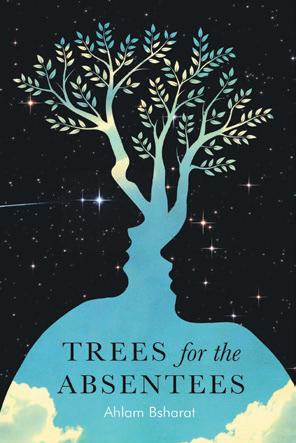

could they be happy
This book does not claim to cover every idea that has coursed through the veins of the Labour Party since 1945 to the present day. Instead, it shows how ideas have been fundamental to the battle between the right and left of the party. It also puts forward the development of Corbynism and how Brexit shaped the debate over renewal in the party.
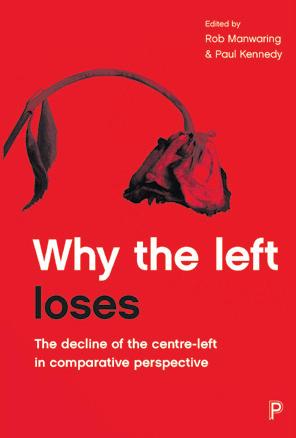


The first chapter is a broad sweep of the historical battle of ideas in the party starting from the Attlee government and finishing on Neil Kinnock’s terms as leader. The second chapter details the ideas under the leaderships of John Smith and Tony Blair, the serious attempts to adopt and adapt the ideas of key thinkers at the time such as Will Hutton (stakeholder capitalism) and Amitai Etzioni (communitarianism), and the constant fear in the New Labour camp of the electoral consequences of any association with ‘Old’ Labour.
The third chapter notes the intellectual exhaustion of New Labour leading into the 2010 general election and the attempts to renew the party outside the leadership circle. It focuses on Ed Miliband’s leadership and the ideas that he engaged with, in particular One Nation and also Blue Labour, the prominent idea that boasted the involvement of key advisors, MPs and academics, led by the idea’s progenitor Lord Glasman.
The fourth chapter concentrates solely on the idea of pre-distribution, the proposal to reform the economic system and move beyond Keynesianism and neoliberalism, premised on accepting the austerity framework set out by the then coalition government—a critical plinth for the emergence of Corbynism. The fifth chapter is a detailed investigation of Corbynism and the attempt to project a newness to Labour’s thinking and develop a 21st-century socialism.
The sixth chapter builds on the conclusions around Labour’s renewal. It chronicles the leadership’s deliberations on Brexit and what it meant for Corbynism and the party’s policy programme. It assesses whether the Corbyn project inextricably led to a pro-Brexit position, given its central thrust to reassert the nation state in an increasingly globalized world, and it makes a comparison between Trump and Corbyn around their economic narratives.
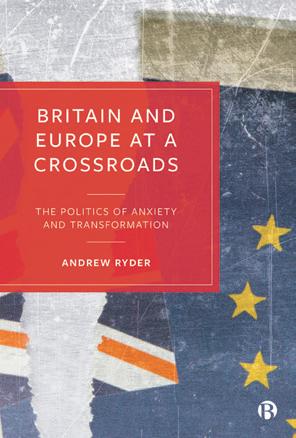
message. This was not lost on Corbyn’s political advisors. They had noted the similarities and indeed viewed their job as ‘to make Jeremy Corbyn the Left’s Donald Trump’ (Evans, 2017). While Trump and Corbyn did not instigate the rise in populism, they sought to ride the wave it offered their respective political horses.
It is controversial to associate Corbynism with populism; there is an argument around whether Corbynism represents populism at all. This is because populism is often seen as a negative and un-progressive political force. This is unfair. Some populist movements are progressive in nature and are labelled populist because they challenge the status quo. In this case, its progressive nature is up for political debate, but ‘it is difficult not to see Corbyn’s success as synonymous with anything other than a distinctive brand of populism’ (Flinders, 2018).
This brand has been the basis of Corbyn’s success, especially through his leadership victory that galvanized a new radical variant of left-wing populism. Both Trump and Corbyn’s aims were to ride the anti-establishment wave. It is important to highlight that MPs were not necessarily lamenting Corbyn for taking this position; some even had some sympathy for it. They noted that Blair’s acceptance of rampant economic globalization helped foment a cultural and economic backlash; Labour’s antidote was Corbynism.
A Blairite MP slammed their own group for not coming up with ‘ideas on how to deal with the negative consequences of globalisation’ enabling the space for populists, both left- and right-wing, to sweep in and not only speak to people’s legitimate grievances but also to offer them solutions. In other words, the right had no ideas about how to face the populist wave among the population, while the left had Corbynism.
In and of itself, MPs were not dismissive of people being offered solutions to the current problems. Rather, their anxiety centred on their perception that Corbynism offered solutions that were not based on new ideas, but rather old ones that offered a nostalgic comfort blanket by referring to a golden past. Once again, here, the same accusation could be levelled at Trump, especially around his slogan ‘Make America Great Again’. It was a reference to a golden past that could be returned to.
To
The association some MPs saw between Corbyn and Trump is one of the most fascinating aspects of the conversation about Corbynism, globalization and Brexit. To be clear, given the sensitivity of making such an association, there was no attempt by MPs to suggest any moral or ideological equivalence. Instead, they premised the association on the rise of populism in reaction to economic and cultural changes wrought by globalization; and saw distinct versions of it that can be categorized broadly as left wing (Corbyn) and right wing (Trump).
The left-wing version of a backlash against globalization was what anti-Corbyn MPs were referring to. An MP sceptical of the Corbyn project explained that ‘the rise of Corbyn and the rise of Trump are anchored in the same starting position, which is the friction between globalization and national politics.’ Emily Thornberry, Labour MP for Islington South and Finsbury, recognized some similarities between Corbynism and Trumpism on their anti-establishment message and on ‘an economic system that simply isn’t working for most people’.
During an interview on BBC Radio 4, Corbyn (in 2016) responded to this proposed similarity commenting that ‘it was a very strange comparison’ and that they shared nothing in common. Indeed, Corbyn refused to attend a state visit banquet in Trump’s honour. On many levels, Corbyn was right that he and Trump shared nothing in common. However, when it came to the economic sphere there were some similarities, as Thornberry alluded to.
This view was shared by a few MPs in the Parliamentary Labour Party (PLP) who saw connections between Trumpism and Corbynism in relation to economic nationalism and the populism that attended that position. A shadow minister observed how Trump was a reaction to industrial decline in the US and appealed to those American voters who had seen their traditional industry leave their home states and who viewed the residents of both the East and West coasts of the US as democratic liberal elites.
The parallels of this process were made evident in the UK by the EU referendum. The ‘left behind’ communities had seen their traditional industries leave, saw relatively low economic gain from globalisation, and viewed people in the major cities, particularly London, as bastions of an economic and cultural elite.
In both cases, the argument for economic nationalism juxtaposed to global free trade was a potent political
The draw of nostalgia was intoxicating for many voters—something Blue Labour had noticed nearly a decade before. For many in the PLP, this was the essential problem for Corbynism. This feeling was palpable in the PLP particularly and, unsurprisingly, among MPs who held reservations about Corbyn. In a thoughtful and reflective tone, a moderate Labour MP critical of Corbyn felt that ‘one of the criticisms of Jeremy and Trump— and I tend to put them in the same brackets in this assessment—is that they are not trying to understand the future and come up with new ideas, but to pull us back to where we were in the past.’
For another backbench MP who openly declared themselves a Blairite, this argument could be boiled down to the old argument of purity vs. pragmatism. In this MP’s view, the Corbynistas ‘are so wedded to their own paradigm that they are not open to new ideas and reality’. This was probably overstating the position, particularly in relation to John McDonnell’s concerted effort to incorporate new ideas in order to develop a socialism for the 21st century. Yet, the Bennite elements of Corbynism offered a nostalgic pitch to members of the Labour Party and tried to speak to a broad swathe of voters by offering a return to Britain’s industrial past.
Both Trump and Corbyn were economic nationalists. Their views on free trade agreements and Brexit were interlinked. Both were Brexiteers and both were sceptical of free trade agreements with other countries. This was premised on many reasons, but the most pertinent was the perceived negative impact global free trade has on workers at home. Trump continually railed against ‘poor’ trade deals like NAFTA by focusing on its impact on American jobs. He frequently called on big companies to bring jobs home to the US and threatened retribution for any company that offshored jobs. On the EU, Trump’s scepticism had stretched back decades, as did Corbyn’s. The EU is the epitome of a free-trade agenda, with a single market underpinned by freedom of movement, capital, goods and services. This was contrary to the agenda of Trump, who frequently threatened trade tariffs with other countries, notably China.
These stances formed an anti-neoliberal agenda. It was economic protectionism in action. Corbynism offered the same agenda, albeit with different
Every great historical epoch returns to Lucretius like bees returning to their flower fields in search of nourishment. I first returned to Lucretius in 2014, when I taught Book II of De Rerum Natura for a class on the philosophy of movement. I added Lucretius to the syllabus because he was an overlooked figure in the history of philosophy who wrote about motion. I was excited about the text, but I was also sceptical that anyone who believed in ‘eternal unchanging atoms’ could have motion as their philosophical starting point. What I encountered, however, absolutely shocked me.
There were no atoms. I scoured the whole Latin text. Lucretius never used the word ‘atom’ or a Latinised version of this word—not even once. Translators added the word ‘atom’. Just as shockingly, I could not find the great isolated swerve in the rain of atoms, for which he is so well known. In Book II, Lucretius says instead that matter is always ‘in the habit of swerving’ [declinare solerent] and if it were not [nisi], ‘all would fall like raindrops’ [caderent]. The solitary swerve and the rain of matter are counterfactual claims. Lucretius never said there was a rain and then one atom swerved. He says that matter is in the ‘habit’ [solerent] of swerving, meaning that swerving happens regularly. This, he says, is the only way to avoid the problem of assuming that something comes from nothing: matter must have always been swerving.
This small but significant discrepancy made me wonder what else had been left out of translations and interpretations. Could it be possible that there was a whole hidden Lucretius buried beneath the paving stones of Greek atomism? If there are no solid atoms and no solitary swerve in Lucretius, can we still make sense of the rest of the book? In 2016 I decided to find out. I dedicated a whole seminar just to Book I of De Rerum Natura read in Latin. To my delight a whole new view on this foundational text emerged that year. I published the results of this study in 2018 as Lucretius I: An Ontology of Motion
Around this time I also began to notice an increasing number of major differences between Lucretius and Epicurus. One of the reasons I thought I would find atoms and isolated swerves in Lucretius was because of a long history of interpretation that conflated the two thinkers, just as earlier scholars had errantly done with Democritus and Epicurus. There is no doubt that Lucretius studied and followed Epicurus, just as Epicurus had followed Democritus. However, between the three thinkers there are worlds of difference that have not been sufficiently understood. Not all students merely imitate their masters. Sometimes imitation functions as a mask for a student to put forward her or his own ideas—which is what Lucretius did. I thus began to unravel the ‘Epicurean myth of Lucretius’.
Lucretius did something very strange. He wrote Epicurean philosophy in the style and method of Homeric poetry and in doing so ended up completely changing the meaning of both. Just like an ancient satyr play, Lucretius’ poem has numerous invocations of bacchanalian intoxication, sexual imagery, desire, and deceptive invocations of gods he does not believe in (Venus and Mars), all affirmed joyfully alongside the destructive power of nature itself: death. This is in stark contrast with the contemplative, serious, pessimistic, and aloof style of Epicurus and his followers.
Epicurus had many Greek and Roman followers who wrote and promoted Epicurean doctrine, but Lucretius did something no one had ever done before. He espoused a version of Epicurean philosophy in a book of Latin poetry written in Homeric hexameter. Why? For pleasure. He wanted to make something new by mixing the old traditions. Lucretius performed a bewildering hybrid of two completely opposed figures and traditions (Homer and Epicurus) and made something novel: something uniquely Roman.
However, De Rerum Natura has largely been treated as a Homeric poem about Epicurean philosophy, but in this book I argue that there is also a hidden Epicurean philosophy of Homeric myth. In the end this is where the real brilliance and originality of Lucretius lies: not in Homer or Epicurus but in their perverse and twisted entanglement. There is thus a becoming Homer of Epicurus. It is a genuine injustice to reduce such a radical enterprise to mere Epicurean ‘doctrine’.
The idea of philosophical poetry is a satyr’s slap in the face to the entire Greek tradition of philosophy from Thales to Aristotle, including Epicurus. With few exceptions, Greek philosophers systematically reduced Homeric poetry to irrational and sensuous mythology
in order to define their new abstractions and idealisms against the straw man of the oral tradition. This was a founding moment of exclusion that has stayed with the Western tradition up to the present—contributing to a perceived inferiority of oral and indigenous knowledge.
It is therefore completely unsurprising that today, when Lucretius is invoked as a philosopher, he is treated as completely reducible to the real Greek master: Epicurus. By doing so, the Western reception of Lucretius has reproduced the same Grecocentric and idealist tradition that vilified pre-Greek and Homeric poetry and archaic materialism. This is the same Western tradition that continues to devalorise oral knowledge and non-Western mythologies today.
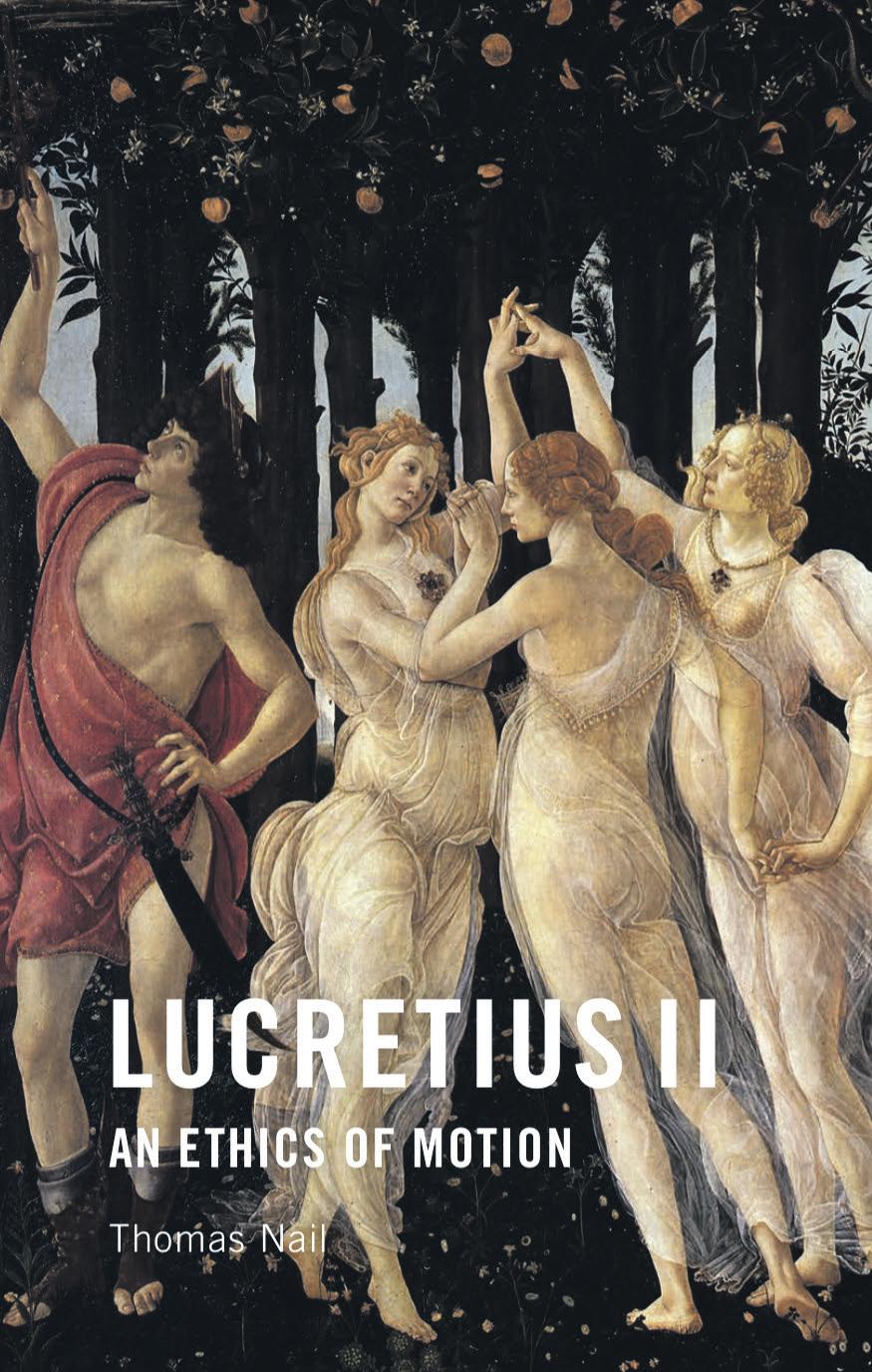
Most Western philosophy, even in its most materialist moments, has in one way or another hated matter and the body. Lucretius was the first from within this tradition to produce a true and radical materialism of sensation and the body. However, like Homer, Lucretius also paid the ultimate price for his materialist sins and was largely exiled from the discipline of philosophy. Either Lucretius was treated as a skilled poet of the Latin tongue or he was treated as a slavish imitator of the great master Epicurus. Never has Lucretius been read as an original philosophical poet of a radical materialism that goes far beyond anything Epicurus achieved. This book and its companion volumes are the first books to show precisely this.
Even more provocatively, Lucretius refused to use Epicurus’ Greek terminology when many other Epicurean and Roman authors, such as Cicero, did so often and easily. The Romans are famous for renaming Greek gods: the Greek Aphrodite becomes the Roman Venus, Zeus becomes Jove, and so on. However, it is also well known that there is no strict equivalence between the two deities. The translation resulted in new stories and a shifting fluidity of roles among the gods. This, I argue, is what happened with Lucretius. De Rerum Natura was not written as Epicurean dogma. It was an original work of philosophical poetry that translated Homeric mythology and Epicurean philosophy into the Latin vernacular and thus transformed them into an original philosophy of motion. A few scholars have noted the tension between Lucretius’ poetic style and Epicurean doctrine, but none has suggested that it indicated anything philosophically original as a result.
The unearthing of this ‘hidden Lucretius’ is the subject of the present work in which I present the reader with a unique kinetic theory of ethics
It seems that everything is on the move today except our ethical theories and ways of thinking about the world. It is time for new ideas, even if those new ideas come from old books. The argument of this book is that we can find precisely such new ethical ideas in an unlikely source: an ancient volume of Roman poetry.
What new ethical idea can help us navigate the turbulent waters of the 21st century? I think Lucretius provides us with a least one answer to this question: an ethics of motion. What kind of ethics does this give us, and what problems does it solve in current ethical theory? I think it gives us several things including a badly needed ethical theory that is not centred on human beings and biological life. Ethics, for Lucretius, is not something that originates with life or with the human intellect and is then applied to other types of beings. Lucretius argues, quite radically, that ethics is something that humans share with the rest of nature because we are all in motion. Lucretius thus offers us a non-chauvinistic ethics much better suited to responding to climate change and ecological crisis than our current anthropocentric models, including those that ‘extend rights’ to or find ‘intrinsic values’ in nature.
In addition, Lucretius’ kinetic ethics provides us with a user’s guide (rather than moral commandments) to managing our collective desires. Ethical habits, for Lucretius, are not fixed in stone but require us to continuously reproduce them. Therefore we can, in principle, always produce something new. Lucretius also offers us several thermodynamic lessons about the energetic precarity of beings-in-motion and the material risks associated with energetic accumulation and expenditure.
Lucretian Ethics
Save A GUIDE TO ETHICS AND MORAL PHILOSOPHY Brent Adkins RRP £15.99 Save £3.00 Our price £12.99


Booklaunch MICHEL SERRES FIGURES OF THOUGHT Christopher Watkin RRP £24.99 Save £3.00 Our price £21.99 Find out more about this book on our website

Publisher’s LUCRETIUS II AN ETHICS OF MOTION Thomas Nail Edinburgh University Press (Edinburgh), Softback, 9781474466646, 240 pages, 341 mm x 370 mm, 30 Mar 2020 Why read Lucretius when you can read Epicurus and Homer? Here’s why FROM THE SAME PUBLISHER EDINBURGH CRITICAL GUIDES TO NIETZSCHE NIETZSCHE’S HUMAN, ALL TOO HUMAN Ruth Abbey RRP £19.99 Save £4.00 Our price £15.99
To
Publisher’s price £9.95 Save £1.20

Booklaunch price £8.75 inc. free UK delivery
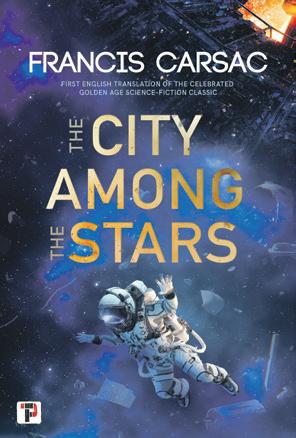

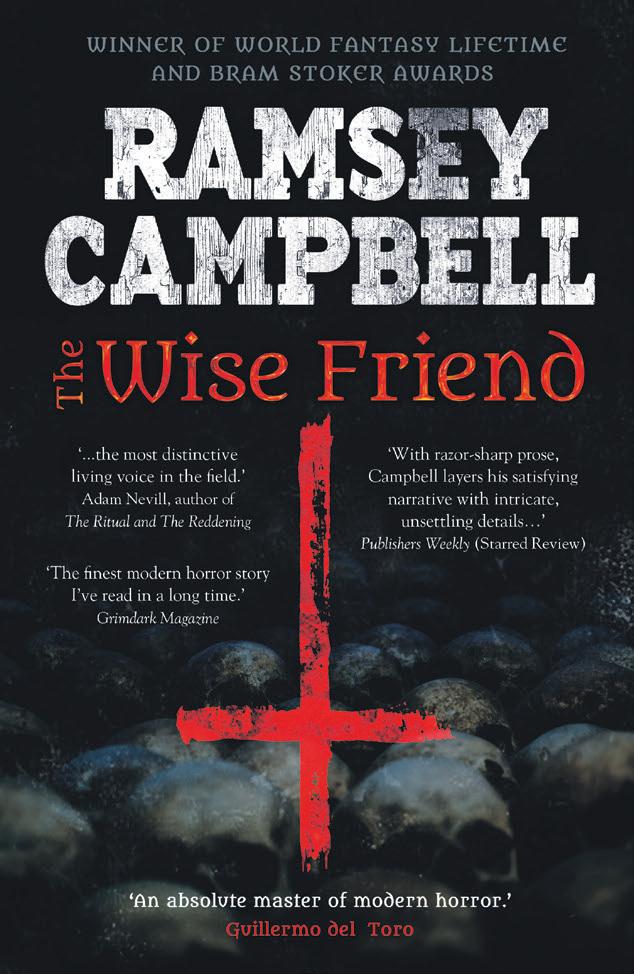
To buy this book, visit www.booklaunch.london/sales
I turned to the book my aunt had most recently lent me, a novel by Bulgakov. While I wasn’t sure I grasped every reference, I found its inventiveness exhilarating and looked forward to the reappearance of Behemoth the cat, surely a demonic familiar. The edition used one of Thelma’s paintings on the cover, a glade where the shape of every tree seemed mysteriously symbolic and the solitary androgynous figure in a robe decorated with sigils could just as well have been Margarita as the Master. I might have asked my aunt what she’d had in mind while painting, but I sensed she didn’t want to talk.
Perhaps I shouldn’t have read Bulgakov so close to bedtime. In bed I imagined Behemoth taking even more shapes than he did in the novel. The prospect kept me awake, and so did my uncle’s succession of snores. At some point I left all this behind, and wakened to hear my aunt and uncle murmuring in their room. No, the voice was just my aunt’s, and my uncle’s renewed snores weren’t an answer. They weren’t even in the same room. My aunt was talking in the studio, to herself or to her work, unless she was on the phone. I couldn’t make out a word, and fell asleep again.
The next time I awoke the house was quiet except for a snorting mutter from the other bedroom. I sneaked to the toilet and was padding back to my room when I noticed that the door to the studio was open wide enough to let me see part of the view beyond the window. Distant treetops caught the dawn, and as the light advanced through the forest I glimpsed an odd illusion of a figure crouching among the highest branches of a tree as though it was poised to leap in the direction of the house. Surely it was composed of wood and foliage, but I was about to edge the door wider when I heard my aunt mumble and an equally protesting creak of the bed. I retreated to my room so fast that I couldn’t be sure I hadn’t seen the shape launch itself into the next tree like a squirrel.
I stayed in my room until I heard my aunt and uncle go downstairs, and then I had a shower. I was rubbing the mirror above the sink clear of condensation to aid my token shave when I had the unwelcome fancy that the hand imitating mine belonged to an intruder. It was flattened against mine like the underside of a snail, and felt as moist and chill as I imagined that would be. I couldn’t help feeling relieved once I was able to see my own face in the mirror. Perhaps my mother was right after all, and too much concentration on the likes of my aunt’s paintings was inflaming my imagination. All the same, I wasn’t about to give up my enthusiasm.
‘Do you have to talk to yourself when you’re working?’ I asked over breakfast.
‘It’s been known,’ my uncle replied. ‘I don’t think your parents would approve of some of my language.’ He was scrambling eggs and hadn’t realised I was talking to his wife.
‘Do you?’ I asked her again.
‘I don’t go in for curses, Patrick. Not that kind or any other.’
‘No, I mean do you talk when you’re painting?’
‘I might.’ As she turned to find orange juice in the refrigerator she said ‘Why do you ask?’
‘I thought I heard you last night while I was in bed.’
‘I’ll have to keep my voice down. Your uncle was making rather a racket. I decided since I was awake I might as well work.’
‘It’s not like you to paint after dark,’ my uncle said.
‘No need to apologise, Neville.’ Without waiting for an answer my aunt said, ‘You’ll be working all day, won’t you? Patrick and I can have our walk.’
She was making it sound like a ritual and I thought my uncle didn’t care too much for it—our outing or her choice of words. ‘Stay on the paths, won’t you?’ he said to me. ‘Don’t let her go wandering off.’
‘If you don’t go where other people won’t,’ my aunt said, ‘you’ll never see what’s to be seen.’
‘I expect that’s what artists do,’ I said.
‘Some of us don’t,’ my uncle retorted, which left me feeling I should have kept the comment inside my clumsy head.
He saw us off into Third Mile Wood from the back gate. A sun that looked shrunken white by its own heat stood above the trees, challenging breezes to cool the day down. The treetops flamed green, lending the foliage they shaded a secretive glow. Silhouettes of leaves crept back and forth on tree trunks, seeking crevices in the bark. On the forest floor, shadows passed over one another like a magician’s hands, elaborating the patterns of fallen leaves. Perhaps some or all of
this was why my aunt kept glancing away from the path, unless she was tempted by the shade. A long curve led to a further unshaded stretch, and my aunt said ‘Say whenever you’ve had enough, Patrick. So long as you can find your way back I can always go on by myself.’
‘Don’t you want me to come with you?’
‘Why in anybody’s name wouldn’t I want that?’ Her laugh was as hasty as her answer. ‘I wouldn’t like to be blamed for giving you sunstroke, that’s all.
Since she was equally hatless I said ‘Have you?’
‘All right,’ my aunt said more impatiently than I thought was called for. ‘I expect we’re protected enough.’
She looked as if she felt she’d either said too much or ought to say more, and I wondered if her concern about sunstroke had left me feeling vulnerable to the relentless heat. My uninvited sensitivity made a mass of agitated shadows seem to dodge from tree to tree beside the path as though keeping pace with us. Or perhaps my aunt’s behaviour was affecting me, and eventually I said ‘What are you looking for?’
‘Nothing I haven’t found already, Patrick.’
I thought this could mean she planned to show me aspects of the woods that had set off her imagination, like the inverted hooves and the log she’d said was waiting to be turned over, but she had yet to speak again by the time we heard voices ahead. They were high as birdsong, though I’d heard none of that for a while – so high that they’d left words behind. In a minute two giggling children appeared around a bend, and then a woman. ‘Shush now,’ she kept saying, more forcefully as they approached us. ‘No more hide and seek for you.’
‘It wasn’t just us,’ the little girl protested.
‘Don’t start fibbing as well or I’ll never bring you here again.’
‘I wasn’t,’ the little boy insisted. ‘There was someone and they wanted us to find them.’
‘They won’t be told these days, will they?’ the woman said to my aunt. ‘Ran right off the path where I couldn’t see them, and they know I can’t run after them.’
‘We only heard them calling us,’ the girl said. ‘And they were a he.’
‘No, she was a she, and she knew our names.’
‘You’re not impressing anyone. Come along at once,’ the woman said and came close to grabbing the children to urge them along the path.
We watched them scurry onwards while the woman called after them to slow down. ‘We ought to listen more to children,’ my aunt said.
‘What do you think they were talking about?’ I asked.
‘Can’t you answer that yourself?’
‘I expect they were making it up. That’s what that lady thought, and she knows them.’
‘Patrick …’ I couldn’t tell what sort of disappointment this expressed, even when my aunt said ‘I suppose you’re neither one thing nor the other.’
‘I don’t know what that means.’
By now we were alone on the path. I thought I heard a giggle somewhere in the trees, but it didn’t sound like either of the children. My aunt glanced in that direction without turning her head. ‘Shall we leave it, Patrick? You were bound to grow out of my fairy tales. I’m sure your parents will be glad you have.’
She’d raised her voice, presumably because she was walking faster, requiring me to keep up. There was no reason to imagine she wanted anybody besides me to hear. She didn’t pause or speak again until we reached a junction where the red path crossed the blue. ‘I think that’s enough for today,’ she said. ‘Let’s get out of the sun.’
I thought she was proposing to make for the shade, but apparently she meant to head for home. Despite her remark about the sunlight, she stayed in the middle of the gravelled track, well clear of the trees. I’d had enough of shadows myself, because the edge of my vision kept producing the illusion that a mass of them as tall as a man had solidified, slithering from tree to tree on my left, a swift indefinable shape scaly with bark. The impression vanished before we came in sight of the house, but as my aunt shut the gate in the fence I could have thought a tall flat intruder had slipped in, disappearing at once. Of course it was the shadow of the closing gate.
We had salad for lunch and then read in the garden. I finished the Bulgakov and started a Kafka. ‘He never reaches the castle,’ my uncle warned me when he came home. ‘Old Franz never got to the end of his book.’
All art has something magical about it.
Aunt Thelma’s has more of the occultTHE WISE FRIEND Ramsey Campbell Flame Tree Press (London and New York), 256 pages, Softback, 9781787584037, 128 mm x 198 mm, 23 April 2020
In H.P. Lovecraft’s short story ‘Cool Air’ (1928), the nameless narrator moves into a converted brownstone in New York. Alarmed by an odour of ‘pungent ammonia’, he investigates: the source of the chemical spill is the enigmatic Dr Muñoz, his upstairs neighbour. Upon meeting the strange, reclusive man, the narrator is instantly but unaccountably repelled: ‘as I saw Dr Muñoz in that blast of cool air,’ he tells us, ‘I felt a repugnance which nothing in his aspect could justify.’ As the story progresses, it is revealed that using techniques of extreme refrigeration Dr Muñoz keeps a mysterious malady at bay, relying on what at first seems to be some combination of medicine and unusual cryonic science. But all is not well with the good doctor, for all his cooling technology and mysticism: he dwindles, eating less and less, talking often of death. An unpleasant odour develops in his apartment that has nothing to do with his constant chemical baths.
Then, one day, the refrigeration machine breaks. Dr Muñoz alerts the narrator to his need by thumping on the floor and cursing in ‘a tone whose lifeless, rattling hollowness [surpasses] description’. Kept in a tub of ice, the physician is rapidly declining, and there is a hint of ‘fiendish things’ in the air as the stench intensifies. The narrator goes out to find workmen to repair the doctor’s machines but returns to discover the apartment in disarray. The only trace of Dr Muñoz is a ‘terrible little pool’ and a few ‘nauseous words’ of ‘noisome scrawl’ on a paper ‘hideously smeared’, as well as a ‘dark, slimy trail’ leading from the note to the couch ‘and [ends] unutterably’. The words reveal that Dr Muñoz had persisted in a state between life and death despite having ‘died’ years before.
His liminal state presents a host of ontological paradoxes, inviting the reader to question the boundary between life and death, human and non-human, consciousness and world, spirit and matter. What seems to be a story about speculative technology turns out to be a story that is also about speculative metaphysics, about the possibility of some horrific vitalism, life sustained by the power of the will rather than the operation of organs. Such philosophical speculations are not illustrated using the dry, detached tone of the metaphysician, however, but with expostulations of growing repugnance finally culminating in an awful confrontation with the doctor’s horrifically deliquescent remains.
‘Cool Air’ was rejected by Weird Tales—the American fantasy and horror fiction pulp magazine—for the intensity of its disgusting content. Lovecraft credits the inspiration of the story to ‘The Novel of the White Powder’, an embedded tale in The Three Imposters (1895) by Arthur Machen, one of Lovecraft’s literary heroes. Machen’s story, in turn, owes much to Edgar Allan Poe’s ‘The Facts in the Case of M. Valdemar’ (1845). Both predecessors of ‘Cool Air’ are tales of putrefaction and necrotic slime, the horrific, undifferentiated sludge of decay; both also deal with ontological paradox and the breakdown of normally sacrosanct categories. ‘Cool Air’ and its fictional forebears dwell with both disgust and fascination upon things beyond the limit of thought: what it is like to be dead, what happens to consciousness after death and the mystery of thinking matter. Such stories are speculative portals, vortices through which realities otherwise unthinkable might be imagined. They seek to propel readers vertiginously into the realm of the unknown.
In Supernatural Horror in Literature (1927), Lovecraft himself tells us that what he calls the ‘true weird tale’ must have ‘something more than secret murder, bloody bones, or a sheeted form clanking chains according to rule’. He insists that in weird fiction a certain atmosphere of breathless and unexplainable dread of outer, unknown forces must be present; and there must be a hint, expressed with a seriousness and portentousness becoming its subject, of that most terrible conception of the human brain—a malign and particular suspension or defeat of those fixed laws of Nature which are our only safeguard against the assaults of chaos and the daemons of unplumbed space.
A Century of Weird Fiction, 1832–1937: Disgust, Metaphysics and the Aesthetics of Cosmic Horror takes Lovecraft’s suggestion seriously to argue that weird fiction, through the means of an aesthetic experience generated by a form of disgust, allows for a moment of what the philosopher of art Carolyn Korsmeyer calls ‘aesthetic cognition’, a visceral aesthetic encounter allowing for queasy re-conceptions of reality. Beginning with the weird’s forefather, Edgar Allan Poe, this study traces the twisted entanglement of metaphysics, aesthetics, affect and weird fiction through the nineteenth century
and into the twentieth, considering along the way the attempts of weird authors such as Arthur Machen, Algernon Blackwood and William Hope Hodgson to stage encounters with the unthinkable through the intuitively unlikely conduit of aesthetic disgust, before returning finally to Lovecraft and his own weird writing.
This book is not a comprehensive survey of weird or gothic fiction through the approximate century it covers. While it does deal substantively with figures who have often been neglected in weird scholarship, it primarily addresses authors of what we might think of as the ‘weird canon’, which avoids duplicating the efforts of works like S. T. Joshi’s exhaustive, multi-volume Unutterable Horror: A History of Supernatural Fiction (2012) or David Punter’s multi-volume The Literature of Terror: A History of Gothic Fictions from 1765 to the Present Day (1996).

For Lovecraft, weird fiction is a ‘composite body of keen emotion and imaginative provocation’. This book is an anatomy of that body and cartography of unholy dimensions, a gazetteer of the unfathomable, with Poe, Machen, Blackwood, Hodgson and Lovecraft for guides. Like the demonological grimoires of Johann Weyer and Jacques Collin de Plancy it is also a bestiary, a book of monsters and monster theory. Indeed, Jeffrey Jerome Cohen’s third thesis on monsters in his essay ‘Monster Culture (Seven Theses)’—that ‘the monster is the harbinger of category crisis’, a creature ‘suspended between forms’ that refuses ‘to participate in the classificatory “order of things”’ and resists ‘attempts to include [it] in any systematic structuration’—in many ways serves as this study’s theoretical starting point, alongside China Miéville’s contention that weird fiction is an iteration ‘of a long, strong aesthetic and philosophical tradition, one endlessly obsessed with questions of the Awesome, a beauty that is terrible and beyond-kenn-or-kennableness’, its ‘teratology’ renouncing ‘all folkloric and traditional antecedents’. Weird revulsion, I suggest, creates aesthetic encounters which help us to think about the unthinkable.
Gothic tumour
What exactly do I mean by ‘weird fiction’? The term is as categorically slippery as the realities it so often describes, originating with the Irish writer Sheridan Le Fanu, whose tales of occult detectives, demonic monkeys and adolescent vampires often qualify as ‘weird’ in the sense that I use it here. Joshi stresses weird fiction’s nebulosity, noting that ‘if the weird tale exists now as a genre, it may only be because critics and publishers have deemed it so by fiat’. Despite the fuzziness of its borders, I side with Joshi in distinguishing the weird from the gothic and want to resist the urge to completely subsume the former into the latter. While Joshi’s objection to the umbrella term ‘gothic’ as employed by critics like David Punter is essentially historical, mine is primarily aesthetic and philosophical. I imagine the weird as a tumour of sorts growing out of the gothic—composed of the same tissues but unfamiliar, alien and yet not-entirely-so, at once part of its progenitor and curiously foreign to it.
A literary excrescence, weird fiction shares many of the same tropes and trappings as its eighteenth-century host, including a fixation on negative affect. Where the gothic primarily generates what Ann Radcliffe calls ‘the gloomy and sublime kind of terror’, accomplished through a ‘union of grandeur and obscurity’, the weird revels in less rarefied forms of horror, derived not from the subject-affirming power of sublime fear but from the subject-dissolving power of disgust. While there are certainly gothic works that turn the stomach (The Monk in particular comes to mind), the disgust precipitated by weird fiction emanates from a specific source—the non-human world, what philosophers have called the world-in-itself. This book interprets the weird as a speculative and affective negotiation of the real, in its most elemental sense.
This is not to say that weird tales do not reflect the culture in which they were written but weird authors do not share a single, dogmatic metaphysics, either. Their speculations are often contradictory, and there is no single, coherent philosophy that weird in toto encodes. One of my central claims, however, is that weird fiction attempts to access a form of reality radically distinct from the human mind and from an anthropocentric viewpoint. I also do not want to denigrate the gothic here, or to draw a boundary between the gothic and the weird: obviously, there are works that traffic in both gothic and weird tropes and affects, including many that I
A CENTURY OF WEIRD FICTION, 1832-1937 DISGUST, METAPHYSICS AND THE AESTHETICS OF COSMIC HORROR
Jonathan Newell
Horror Studies, University of Wales Press (Cardiff), 272 pages, Softback, 9781786835444, 138 mm x 216 mm, April 2020
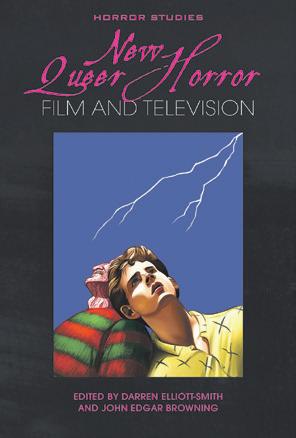

Publisher’s price £14.99
Save £1.80
Booklaunch price £14.99 inc. free UK delivery
To buy this book, visit www.booklaunch.london/sales

Booklaunch has published extracts from completed but unpublished manuscripts for every month of our existence. We highly recommend each one and are able to negotiate rights. All inquiries in confidence to Maggie Bawden at book@booklaunch.london.
Ditto if you have a manuscript of your own that you want to showcase
ROAD TO EXTINCTION
Jonathan Lawrence
Historical assessment of the Andaman islands and its endangered tribespeople


See page 14
OUT OF AFRICA
Michael Holman
Fifty years of reporting on Africa by a former Financial Times correspondent

See page 12
SUPPOSE
Anita Mason
Political ghost story about a museum curator forced to question his certainties
See Issue 5
CALIENTE
Chris Hilton
A torrid love affair with a Havana street girl leads to an exploration of rural Cuba

See Issue 3
TASTE WARS
Robert Best
Ringside view of the English design profession in the first half of the 20th century
See Issue 1
AN INHERITANCE
Brian Verity
True story of a man who finds his wife has Huntington’s and helps her to kill herself
See Issue 2
HAPPY NAPPY
Stephen Games
Delightful A.A. Milne-style rhymes for parents to enjoy with their babies
See Issue 5
EMPIRE’S LOVING STRANGERS
Jay Prosser
Chest of memories reveals unexpected links between Iraqi Jews, Singapore Chinese and the British
See Issue 2
THE LONDON YOOT BIBLE
Stephen Games
The New Testament translated into the language of black urban street talk
See Issue 4
THE TRIBAL BIBLE
Stephen Games
A graphic untangling of the Bible reveals meanings long confused by standard editions
See Issue 3
GOOD MORNING EARTHLINGS
Peter Archer
Comic existential sci-fi novel in the style of The Hitchhiker’s Guide to the Galaxy

See Issue 2
DETACHED AND DOUBLE
FRONTED
David Games
Humorous novel about London estate agency in the suburbs of the 1970s
See Issue 1
GREEK GOLD
Susan Barrett
English woman searches rural Greece for the truth of her father’s wartime death
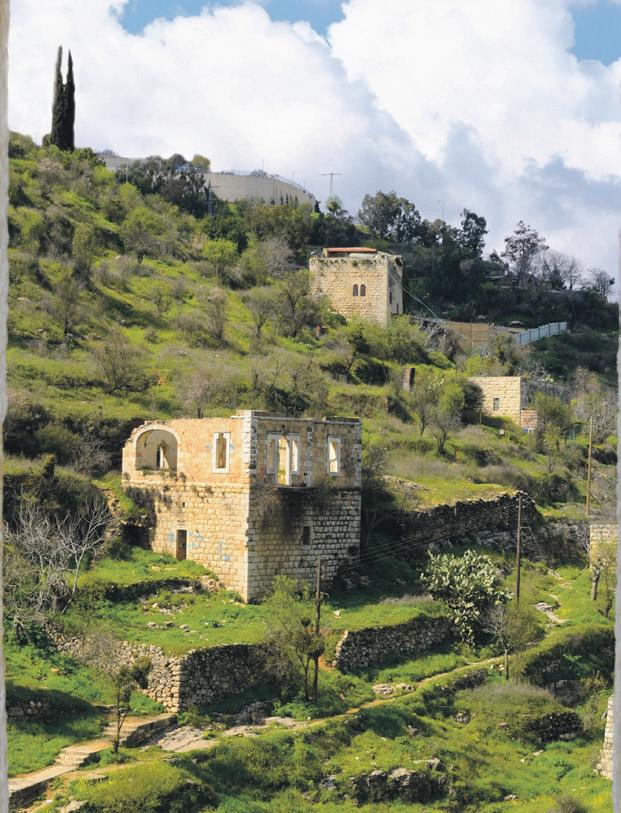
See Issue 4
A HARD PLACE
Patrick Kelly
Gritty Romeo-and-Juliet novel about love across Northern Ireland’s sectarian divide
See Issue 5
THE MOTHER OF BEAUTY
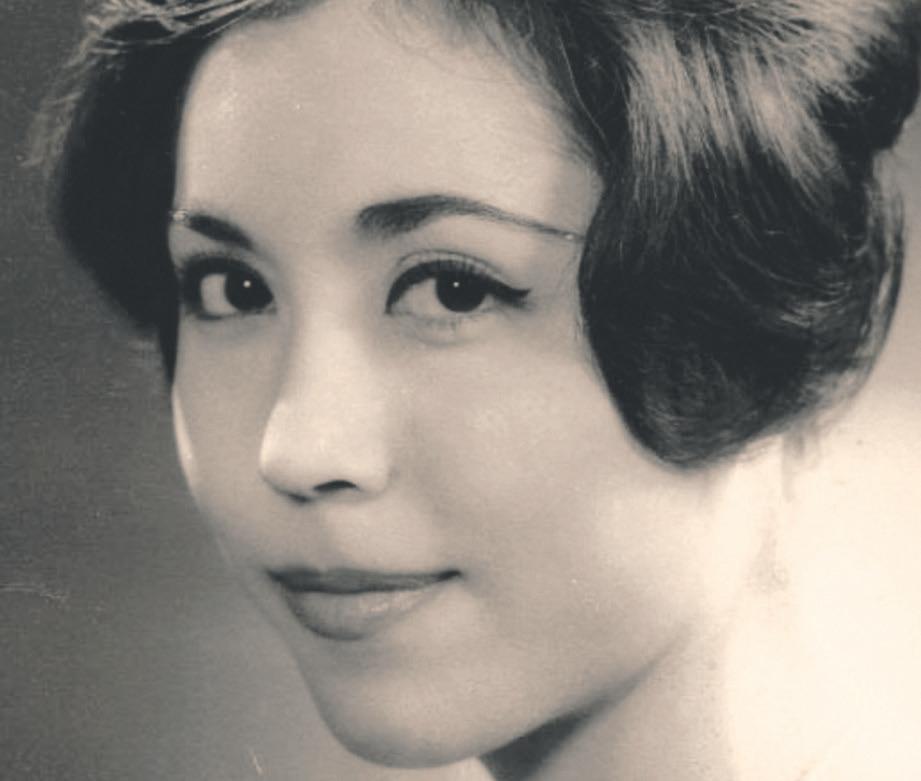
Kirby Porter
Memories of a past love lead back to a time in Northern Ireland that is easier not to confront
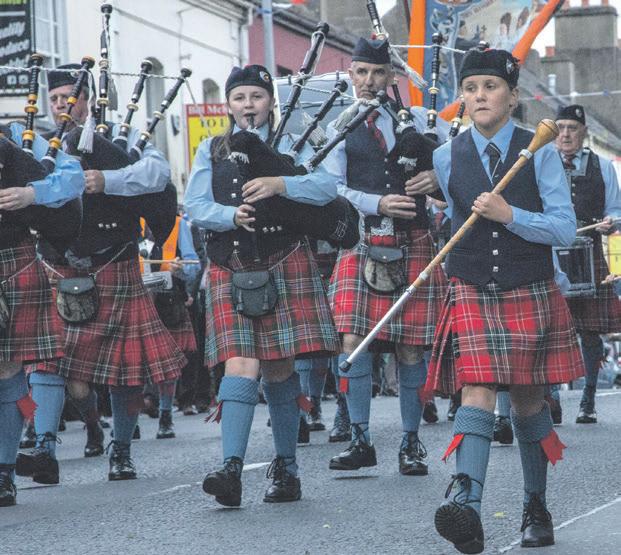
See Issue 2
RIMBAUD IN SCOTLAND

Karen Strang
The 1870s Scottish poems of Arthur Rimbaud translated into broad Scots
See Issue 2
SANS GILL
Kate Ashton
Memoir of the political, religious and cultural milieu of the artist Eric Gill
See Issue 2
WHAT’S MY CAT TELLING ME?
Stephen Games
Comic picture book invites children to interpret messages left by Sophie’s cat
See Issue 1

In these stressed times, it is important to relax. No daily sudoku? Try Lingualia. A friend of Booklaunch writes and circulates a blog to a group with a special interest in language and how it works. For your entertainment, he has offered us four excerpts from the latest edition. The contents, he says, is (or is it are?) informal and unchecked, offered in good faith and without guarantee of accuracy or originality. Reader responses and inquiries via Booklaunch—comp@ booklaunch.london— please and ditto if we have inadvertently infringed anyone’s copyright
1 A quiz to start What have the following in common?
average weekly wage arts and crafts mass media motor neurone disease
Martha’s Vineyard Washington Times
(Clues: a softer-hearted puzzle setter would have presented the second item as Arts & Crafts, and would have added a seventh item as a real giveaway: Train à Grande Vitesse.) Answers, if you want them, will appear on the Booklaunch website in due course, to give you enough time to scratch your head and discuss with friends. Or you can just write and ask.
2 Boys and girls, actors and actors
At the start of several Wikipedia articles, the Wikipedia editors issue the following warning:
Note: In some forms of current English usage, the terms actor or female actor are often used in place of the more widespread actress. (Spot the solecism, by the way. Perhaps the Wikipedia editors should have headed the warning differently—not Note but Sic Note.)
Despite its growing disrepute, actress certainly does remain widespread. On a recent Radio 4 programme, Kristin Scott Thomas said:
I’ve become an actress, and—actresses, you know, we change characters, we change environments … My mother had trained as an actress.
Some of Dame Kristin’s counterparts are more with-it. Here are a couple of Wikiquotes from Gillian Anderson:
There are huge differences in the way male and female actors are perceived. Women have to be a certain size, in order to get good roles. The only successful, larger-than-average female actor I can think of is Kathy Bates.
I became an actor because it was the only thing I could do. But even Gillian Anderson lapses. Here is another Wikiquote of hers:
I tell other actresses when I think their work is amazing … Wikipedia itself blithely continues to favour actress. It uses the description American actress for Meryl Streep, Gwyneth Paltrow and even Jane Fonda, and it uses the description English actress for Judi Dench, Glenda Jackson, and even Vanessa Redgrave. Miriam Margolyes is a British-Australian actress and Gillian Anderson herself is an American-British actress
The only exceptions that a very quick trawl of Wikipedia reveals are the entries for Helen Mirren, English actor, and Elisabeth Singleton Moss, American actor.
Kristin Scott Thomas’s own Wikipedia bio describes her as an English-French actress. And it reports that she has won a BAFTA Award for Best Actress in a Supporting Role and an Olivier Award for Best Actress, and has been nominated for the Academy Award for Best Actress. However, she will never win a Best-Actress award from the Screen Actors Guild, because there is no such award. All she can hope for is the award for Outstanding Performance by a Female Actor … (in various categories).
What is the status of other -ess words? Princess and duchess remain unchallenged. Likewise lioness and perhaps, in the right context, heiress. As for adulteress, adventuress, goddess, murderess, Jewess, shepherdess, and temptress, they apply to historical or literary characters but seldom to living women. And even historical or literary characters would no longer be referred to by terms such as authoress, poetess, sculptress, or patroness
Some forms like sailoress or athletess never really caught on.
The diehards, apart from actress, are stewardess, hostess, and especially waitress (Mind you, air stewardess and air hostess have given way to the gender-neutral flight attendant.)
In South Africa, the gender-neutral term waitron was introduced quite a while ago. (Is it actually in wide/ standard usage or is it used in a knowing/mocking way? RSVP.) And how long before they adopt the corresponding term hoston?
3 Tricky comparisons
A standard usage warning is to avoid than after prefer. The warning often goes unheeded:
King was an ambitious and energetic young economist who preferred to work on the real economy than debate among the left-wingers in the Cambridge economics faculty.
—Stephen Fay, in the TLS
… and many of them said that they preferred to talk to adults such as teachers than to the other children.
—Simon Baron-Cohen, The Essential Difference
Likewise the warning against omitting the as from phrases like as good or better than and as much or more than:
Put that computing power in a biomechatronic limb and the result is one that feels as good, or better, than a biological one.
—Jemima Kiss, in The Guardian
Two-fifths admit drinking as much or more than their grown-up children, according to a poll.
—Camilla Turner, in The Telegraph
A far more common clanger, yet far less often censured, is the use of as than in what should be an as as construction. Here are a few examples from my collection:
Forty-somethings are now almost twice as likely to be renting from a private landlord than they were 10 years ago.
—Keven Peachey, on the BBC news website
There were twice as many inquiries for France in late 2017 than a year earlier, according to Home Hunts.
—Zoe Dare Hall, in The Sunday Times
German tourists spend almost twice as much time in the UK than their English counterparts do in Germany, and there are four or five times as many German students studying in British universities than the other way round.
—Jeremy Armstrong, in the Daily Mirror
As so often, you can explain the error as a mixed idiom: twice more common than + twice as common as.
4 Word records
Which English word is misspelt most often? It’s no good looking in printed texts these days, as auto-correct has reduced spellos drastically. So you’ll have to ask school teachers or college examiners. I’d guess seperate, reccomend, or acommodate / accomodate. Other contenders:
from sciences and social sciences: bouyancy, diagramme, dessicated, dipthong, Fahrenheight, gutteral, innoculate, occulist, opthalmologist, psychodelic, putrify, rarified, vetinary or veteranary from the humanities: artifact and miniscule (except that both of these seem to be standard, or even preferred, in American English), aquaduct, concensus, delapidated, elegaic, expatriot, playwrite, questionaire, recconnoitre, resurect, sufferage, supercede general: assinine, with baited breath, desparate, exhorbitant, faulter, harras, idiosyncracy, impressario, indispensible, stupify, solice, stilletto, villify, withold. And of course mispell
For me, one strong contender was nerve-wracking. The BBC News website used it in articles on three successive days in December—enough to shake my own certainty, and prompt a quick check. Reassuringly, my COED insists on nerve-racking. But to my surprise, all my other desk dictionaries allow nerve-wracking as an alternative.
The OED traces nerve racking (without the hyphen) back to 1812, in a letter of Shelley’s. But nerve-wracking is not a particularly recent variant (i.e. ?clanger). The OED’s first cite is from a 1909 article in The Daily Chronicle; another cite is from The Guardian in 1973.
Still, the cognoscenti (or snobs, if you prefer) regard nerve-wracking as non-U—used by the pretentiosi who write ‘between you and I’, ‘hone in on a solution’, ‘mitigate against a settlement’, and ‘rose to a crescendo’.
The racking of nerve-racking means ‘torturing on the rack’. I’d assumed that the use of wracking was prompted by association with the phrase a nervous wreck—cf. playwrite based on playwriting—but a usage note in NODE, at rack, suggests otherwise.
A favourite game in our family involves making up name chains where the last surname becomes the next first name, thus Upton Sinclair Lewis Carroll Nye Bevan … or Leslie Stephen King Charles Kingsley Amis. I challenge you to produce the longest string, using famous names— or, if you prefer, literary works (This Side of Paradise Lost Horizon …). Want a harder challenge? Why not limit yourself to only male or only female writers, or see if your chain can lead back to where you started. Email your entry to comp@booklaunch.london putting “Comp4” in the subject line and supplying your postal address, so we can send you a prize. Winning entries will be published.
Well, this was fun. I asked you to choose two literary characters to debate the benefits of Brexit. First out of the slips was Catherine Miller from Wantage who opened Nonsense and Insensibility and found the prescient line, “Colonel Tusk continued as grave as ever, and Mrs May, unable to prevail on him to make any offer himself, nor commission her to make one for him, began to think that, instead of Midsummer, they would not be divorced till Michaelmas.” Angela Broughton in Ipswich offered a song rather than a conversation:
Mad dogs and Englishmen say No to the Frog and Hun. The Portugese don’t care to, the Slovenes wouldn’t dare to, Irish and Austrians just argue from twelve to one, When Englishmen request a siesta. In the Netherlands and all other lands, there are laws that are quite unfair, In each Baltic state there are rules they hate, which the Britishers won’t wear, Directives that Spaniards swear at, nobody else would shun
table mountains I saw the gates of the Celestial City.” “But before us lies the Valley of Humiliation!’ cried Faintheart”—and he got out of the mire on that side of the swamp which was next to his own house.
The Big Hippo Guide to Democracy, Referendums, Elections (and all that)
Martin Rowson and Bob Marshall Andrews
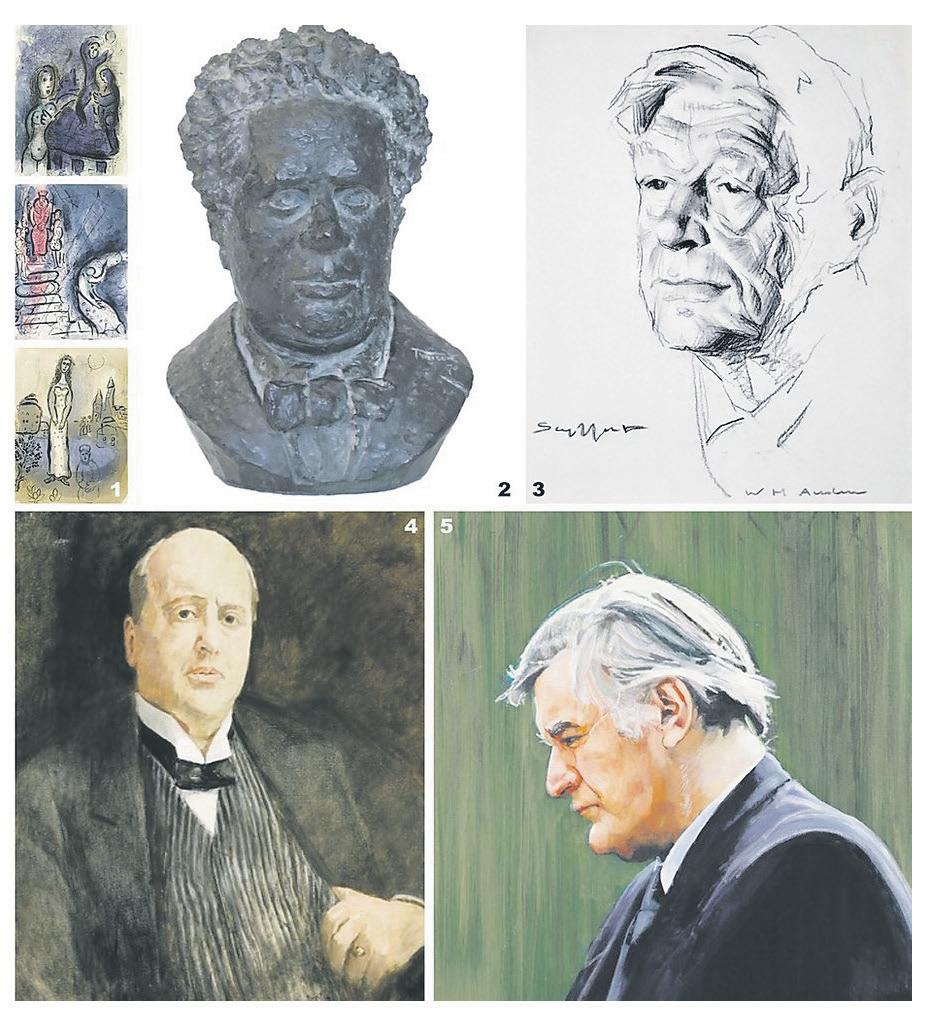
Everything with Words
Publication July 25, 2019
Paperback, ISBN 9781911427124, RRP £8.99
The hilarious joint creation of Bob Marshall Andrews, author, barrister, former Labour MP for Medway, thorn in Tony Blair’s side and guest on Have I Got News for You, and multi-award-winning cartoonist, author, illustrator, writer and poet Martin Rowson. Just what you need in Brexit Britain to keep your flag flying and madness at bay
The End of Online Shopping Wijnand Jongen

World Scientific Publishing
ISBN: 9789813274761
They Called Us Enemy George Takei
IDW Publishing
ISBN: 9781603094504
RRP: £17.99
A stunning graphic memoir recounting the childhood imprisonment of actor, author and activist George Takei within American concentration camps during World War II
To buy any of the books advertisted on this page, go to www.booklaunch.london and click on BOOKSHOP or point your smartphone here. All prices include free UK delivery.
